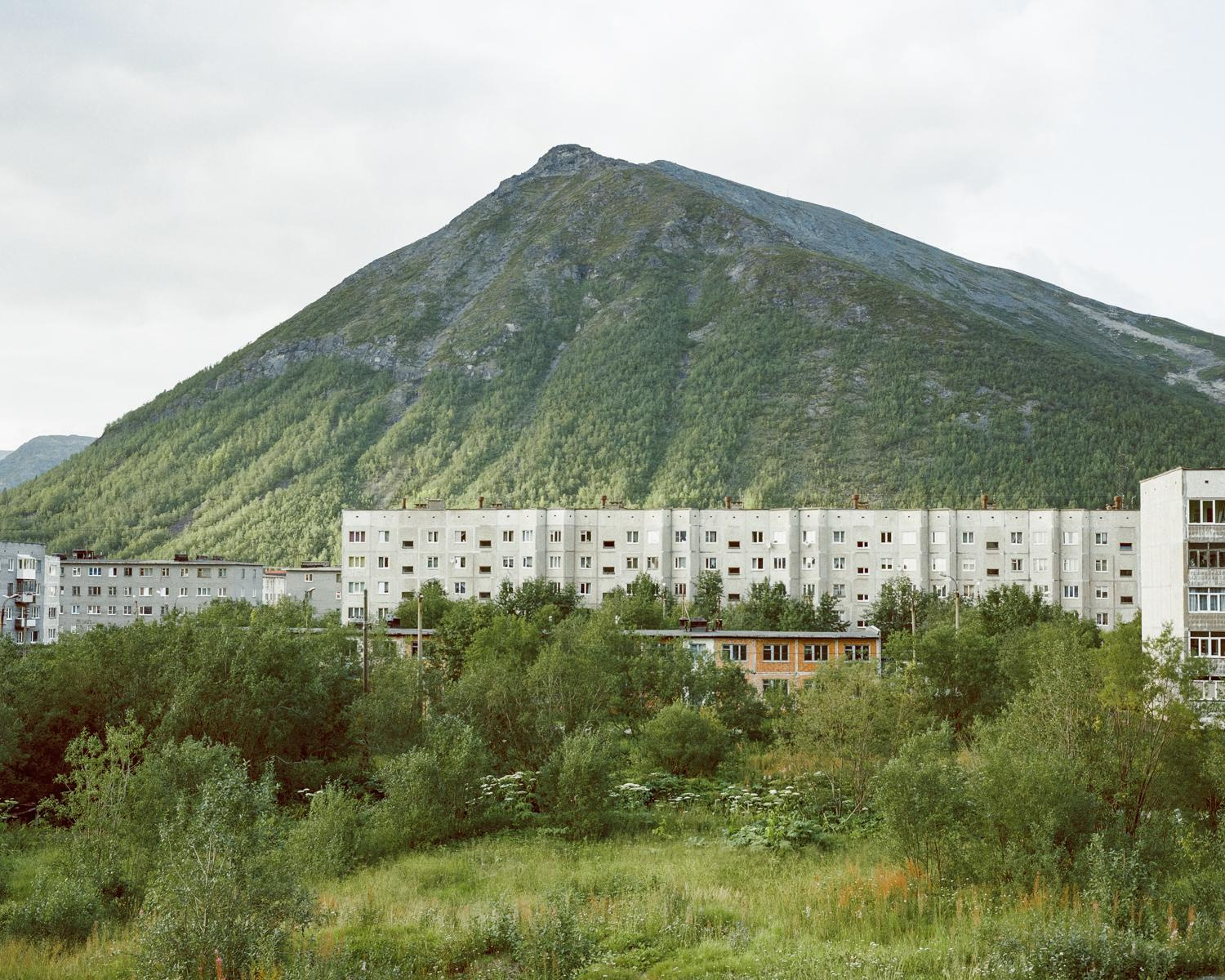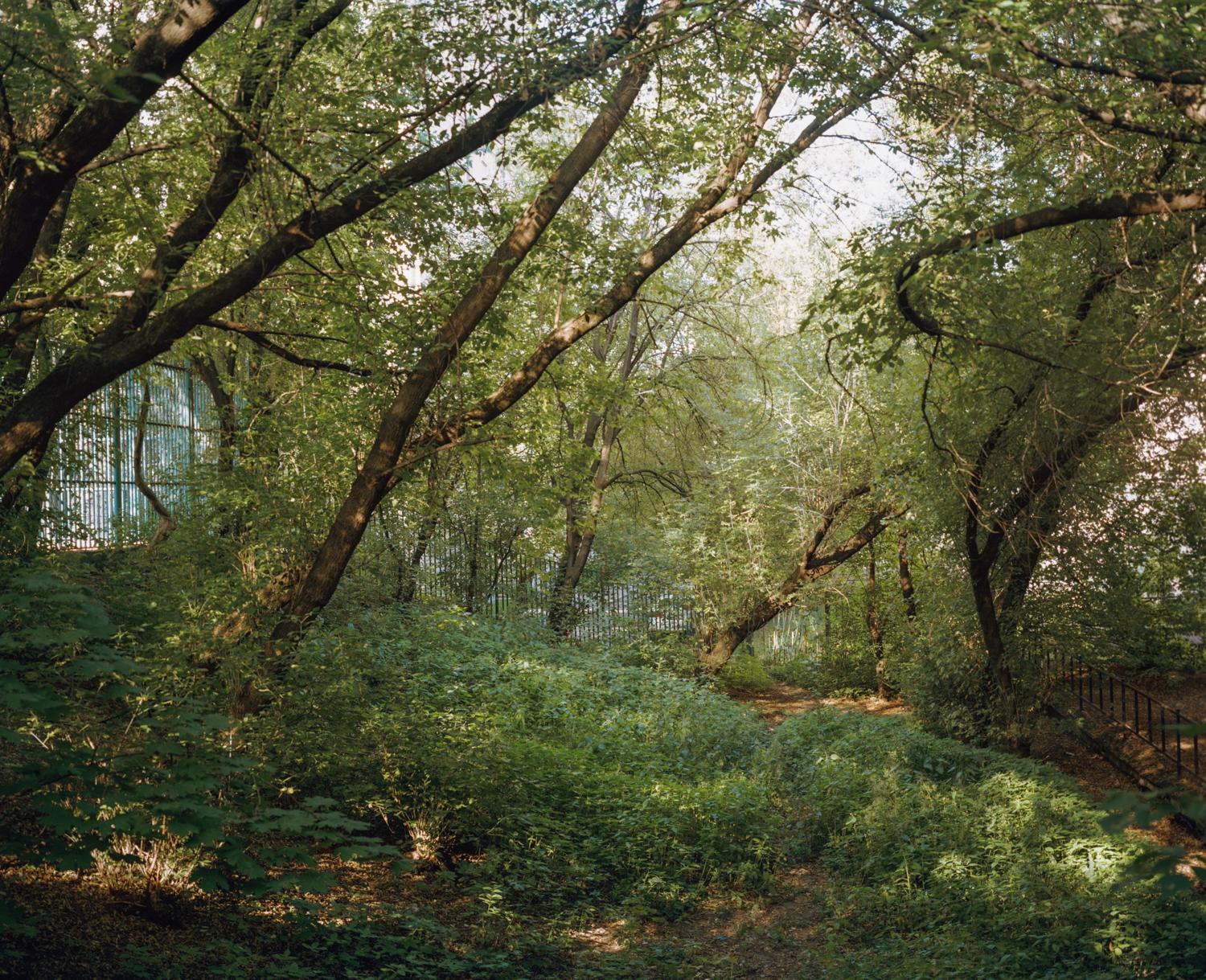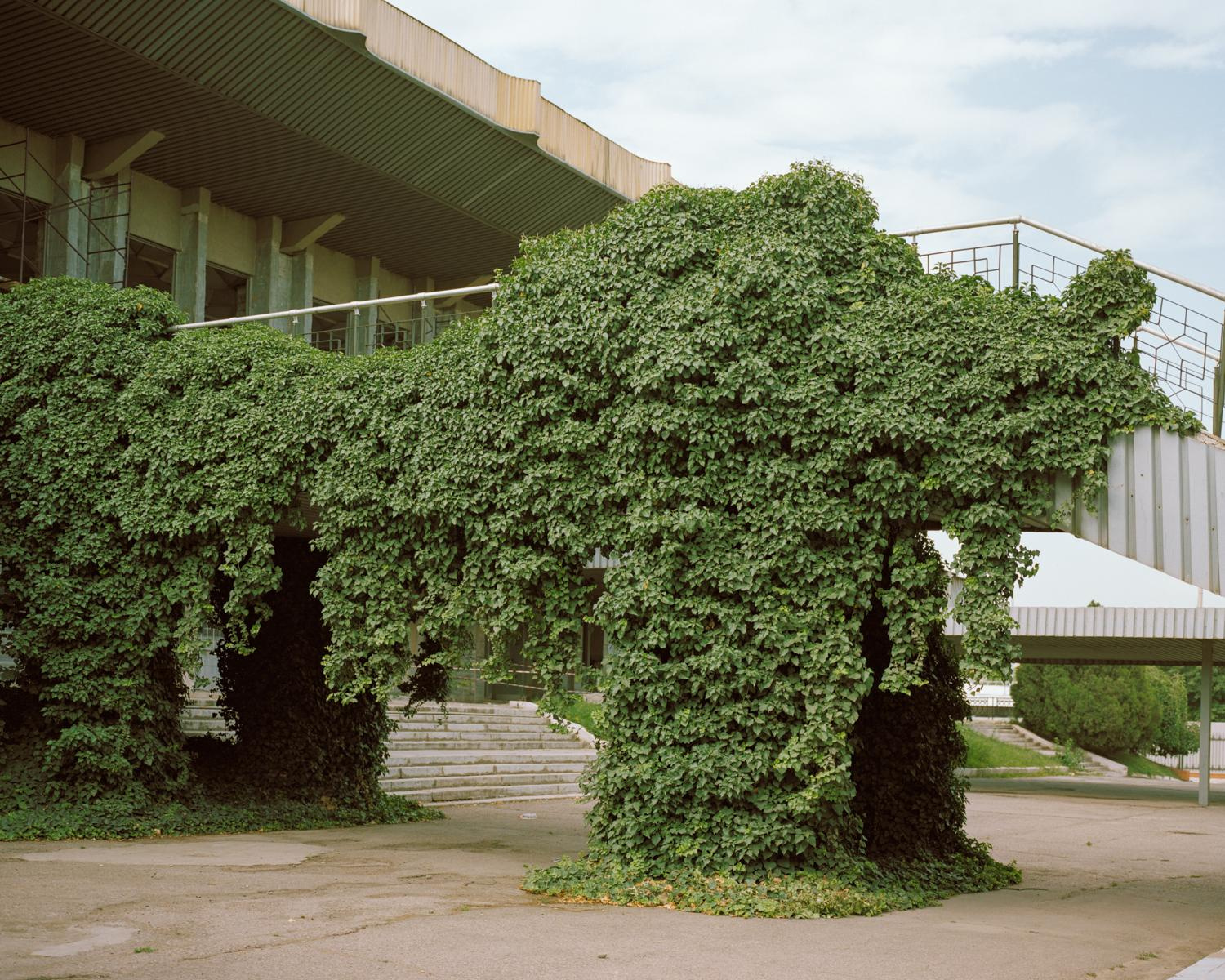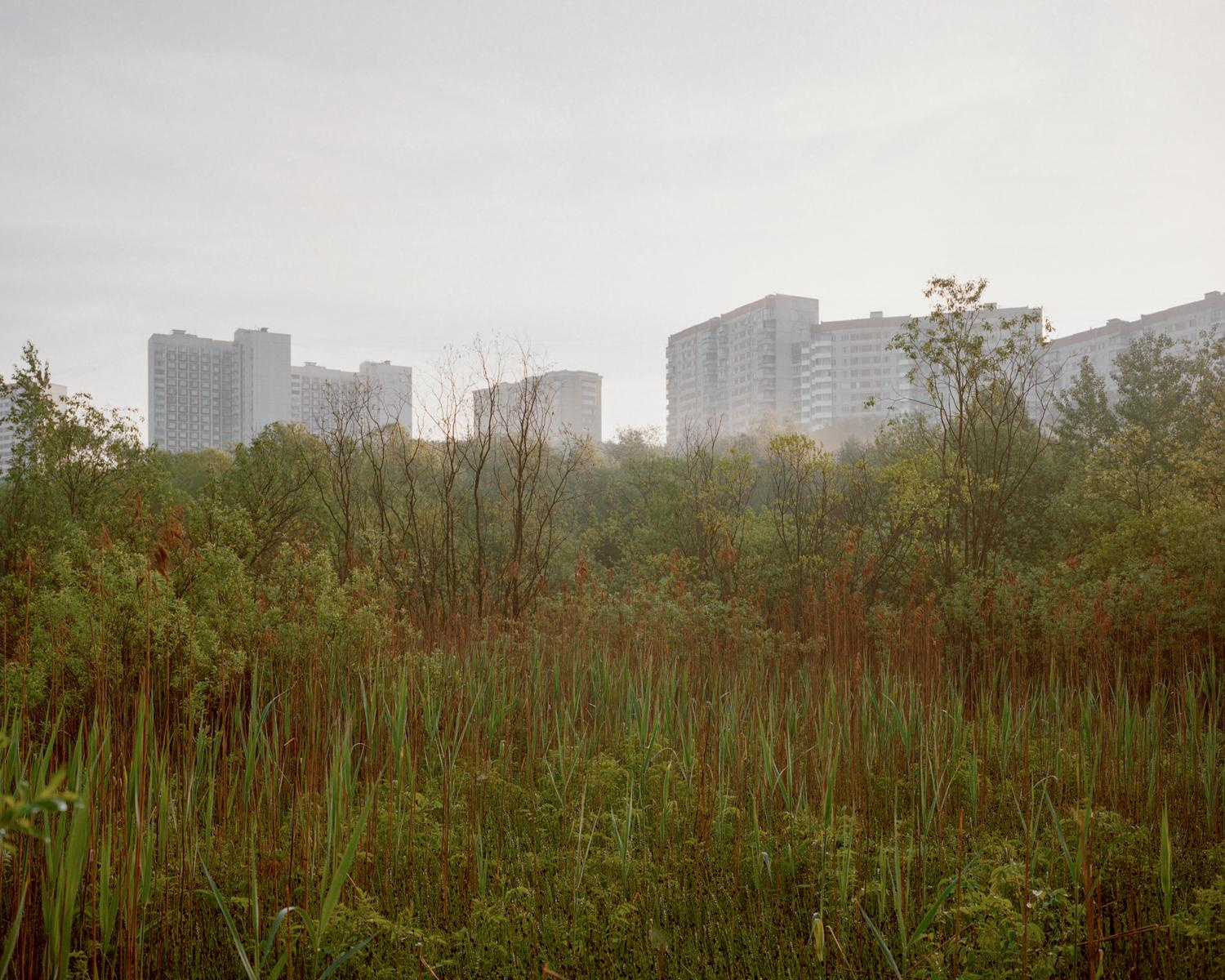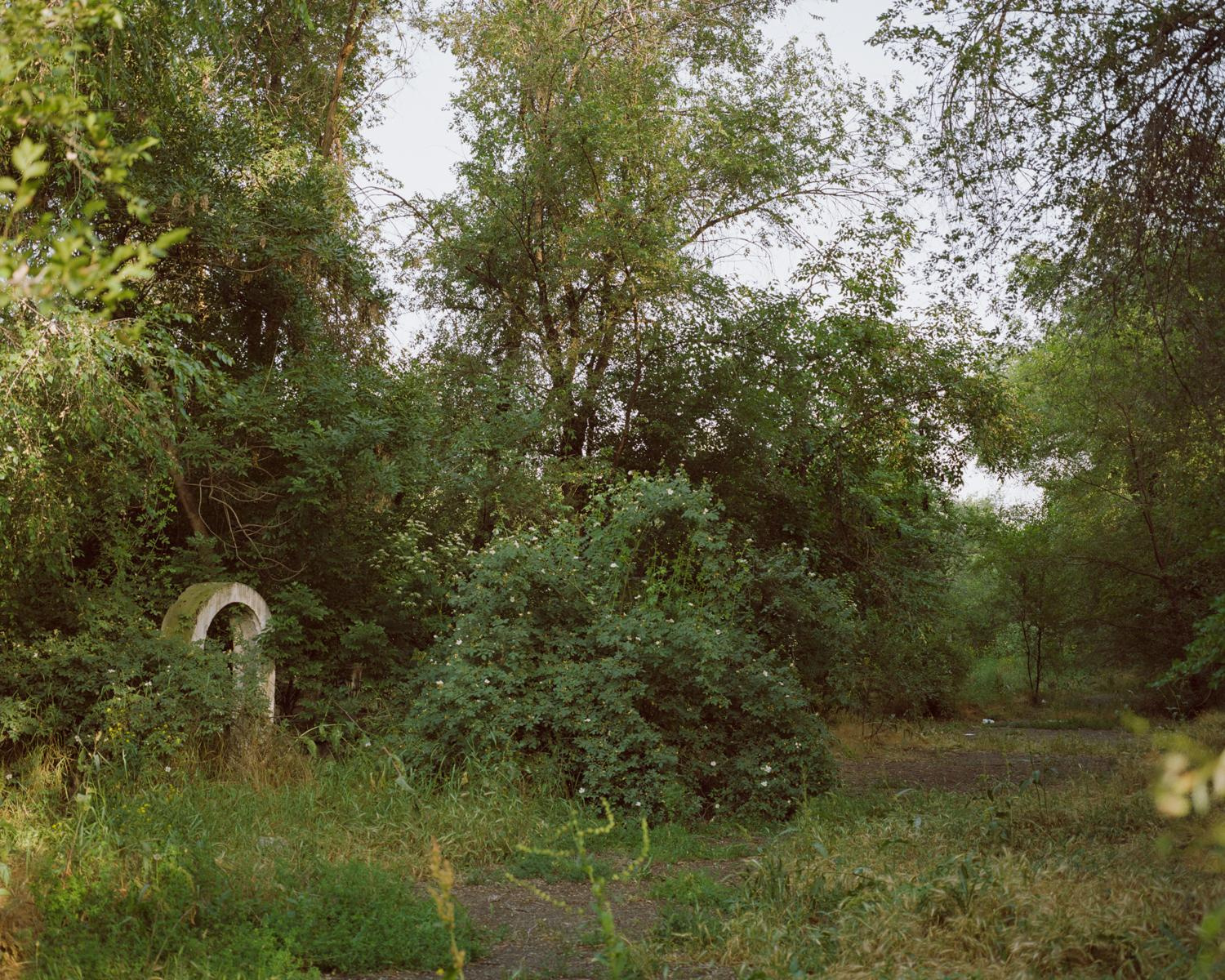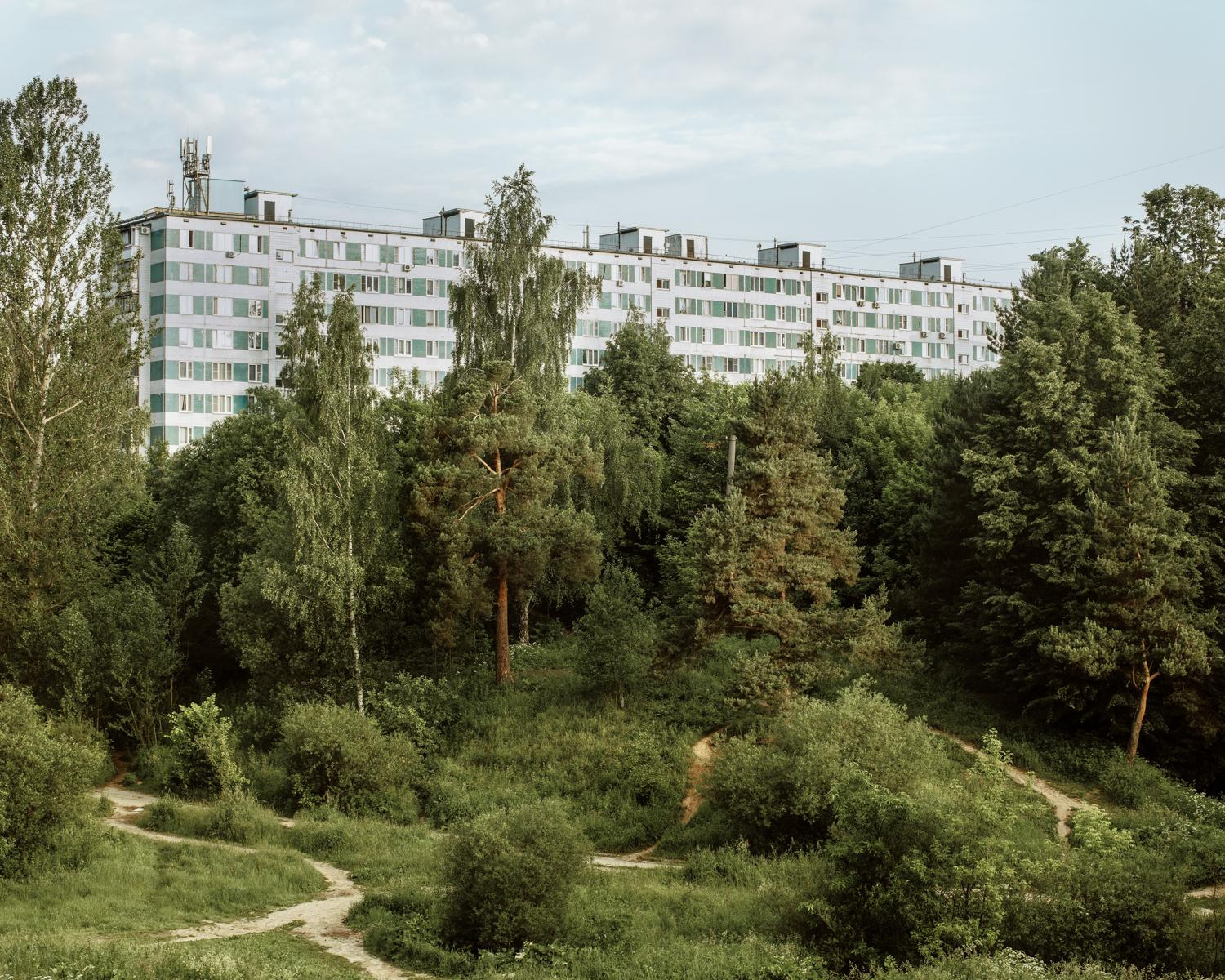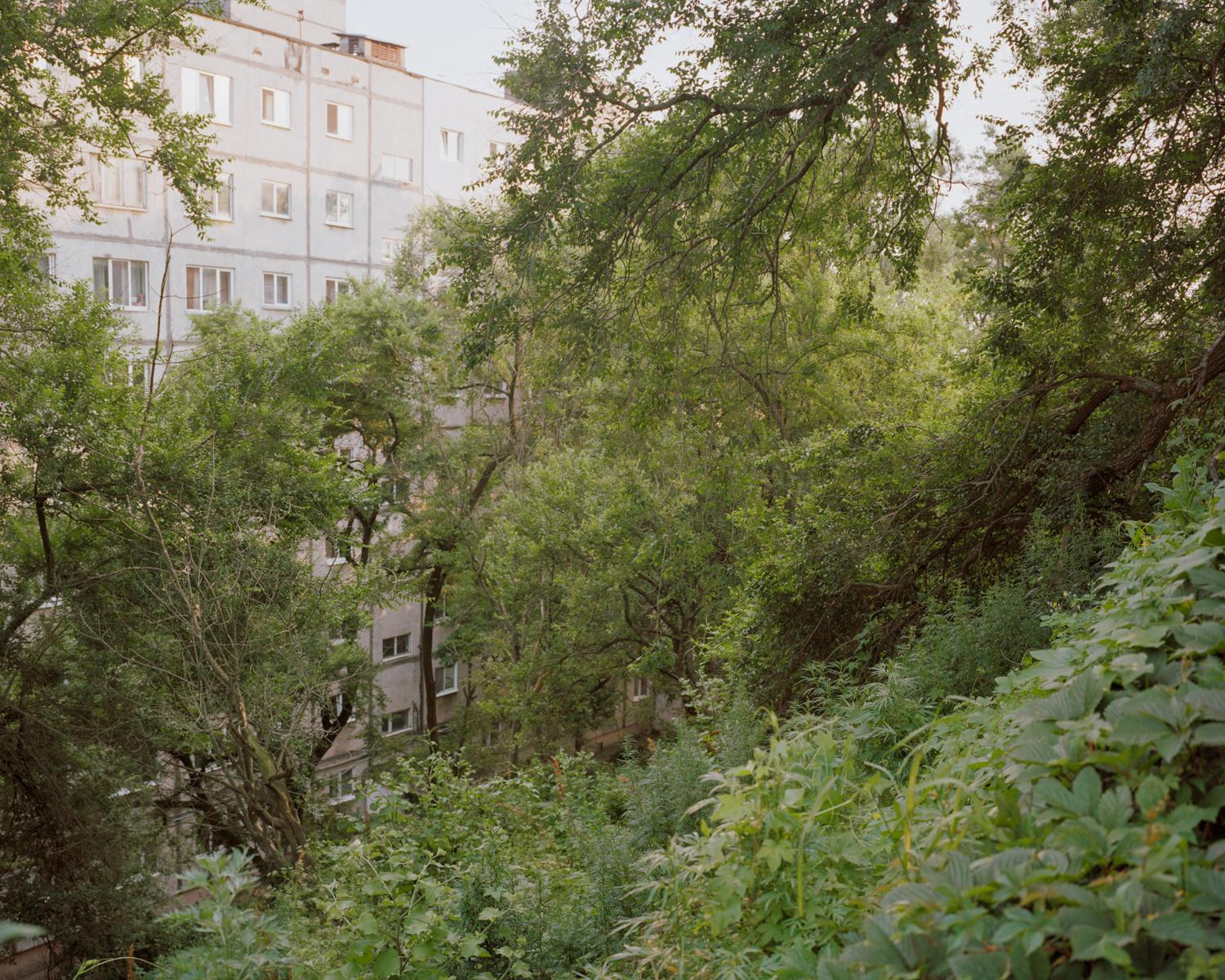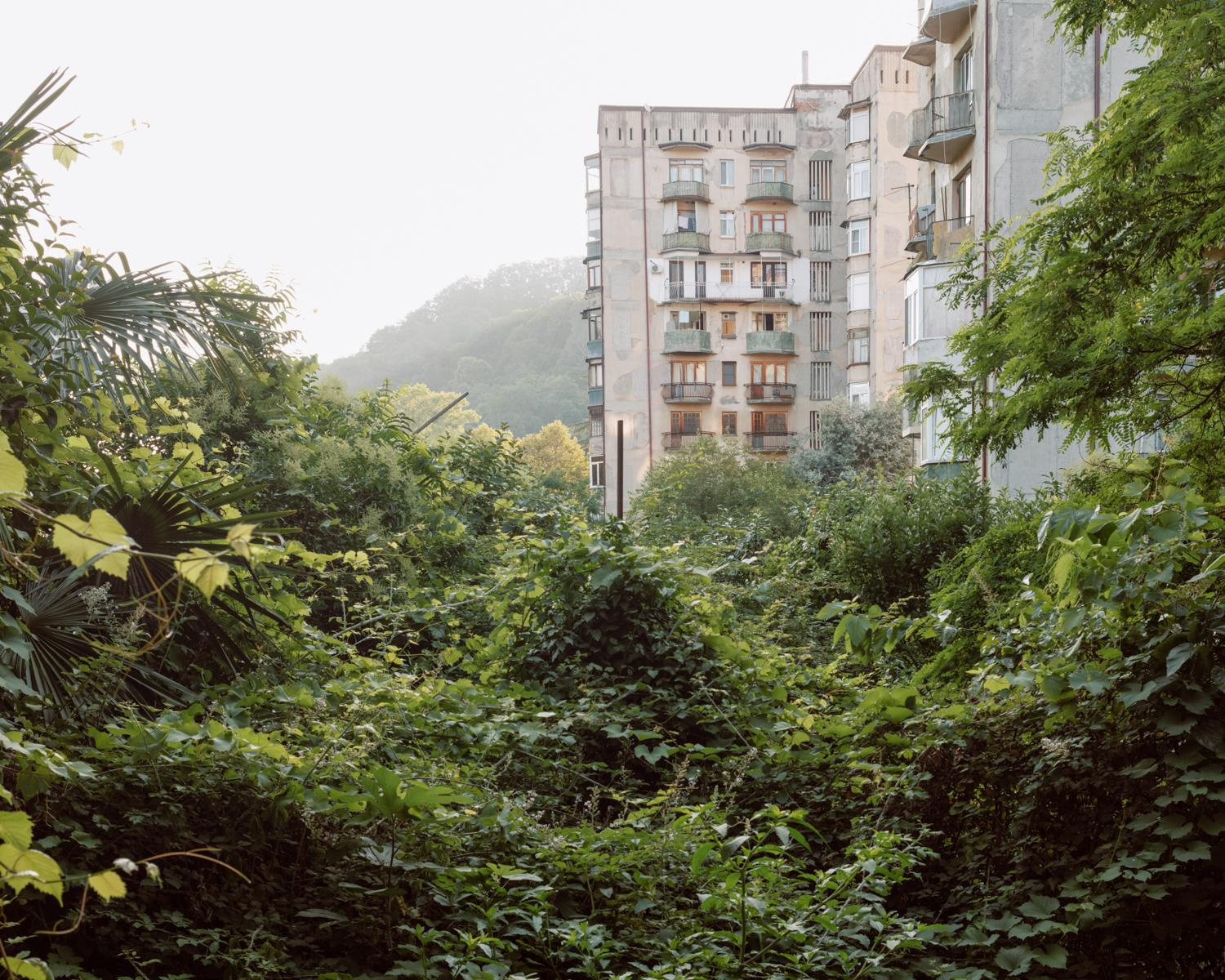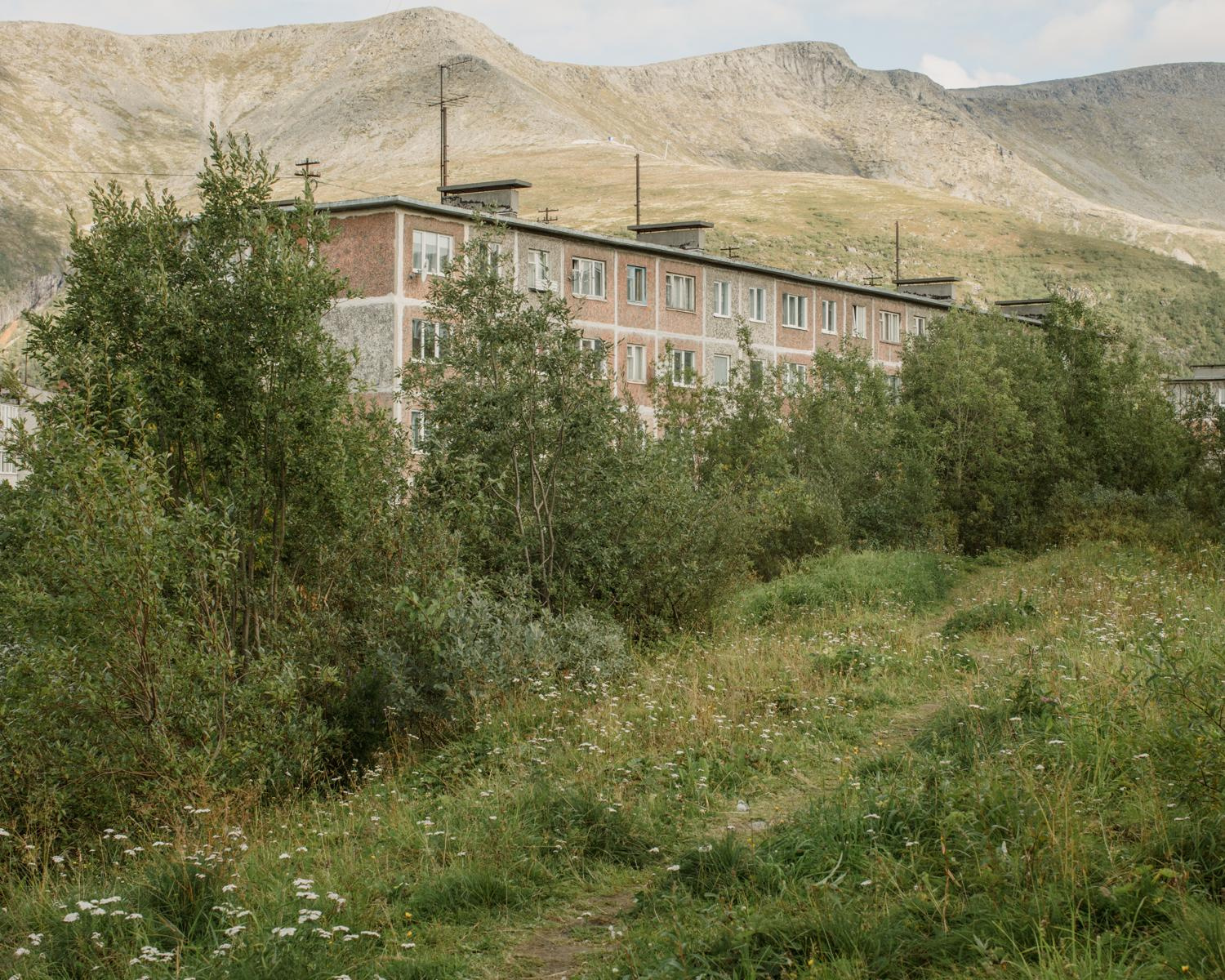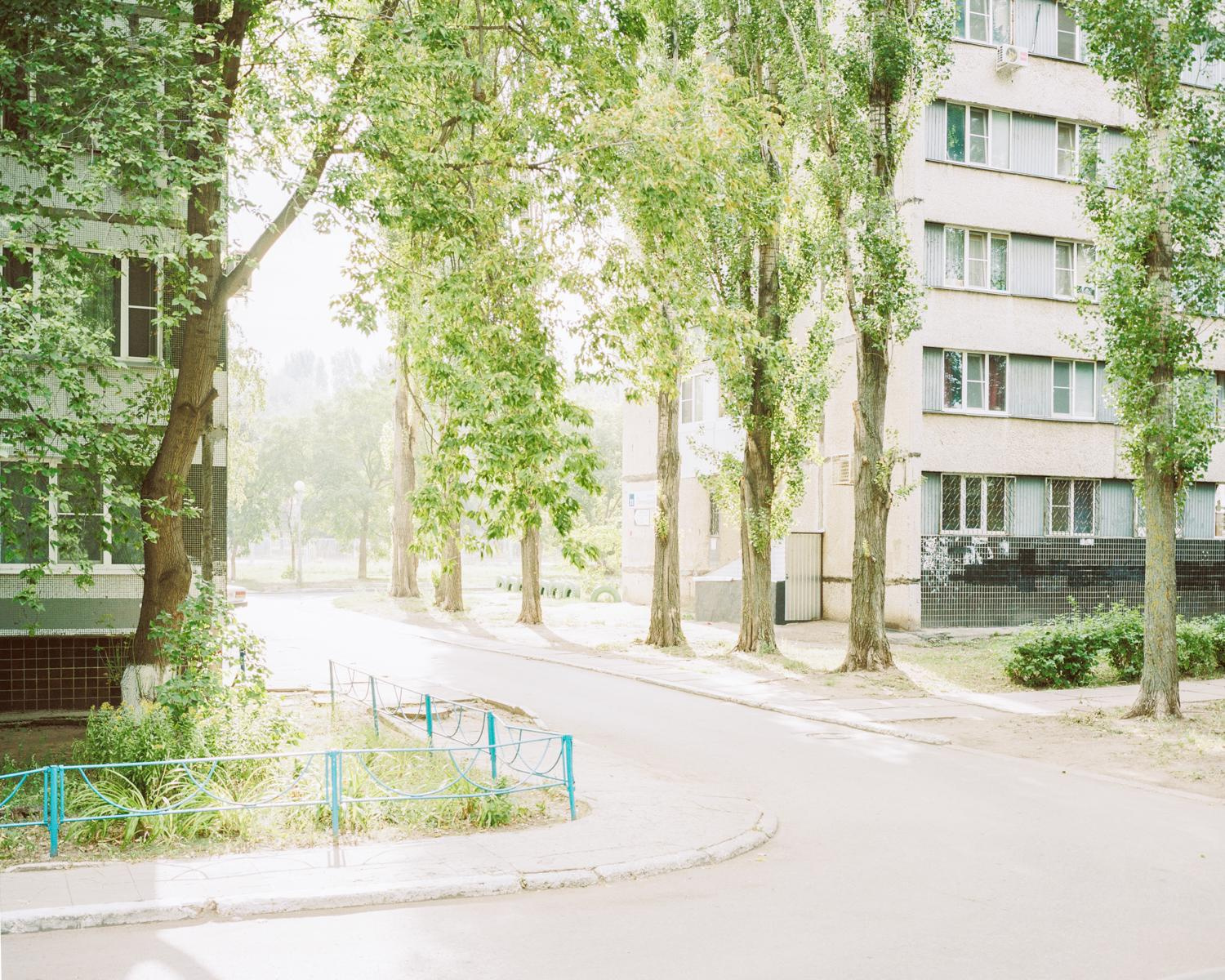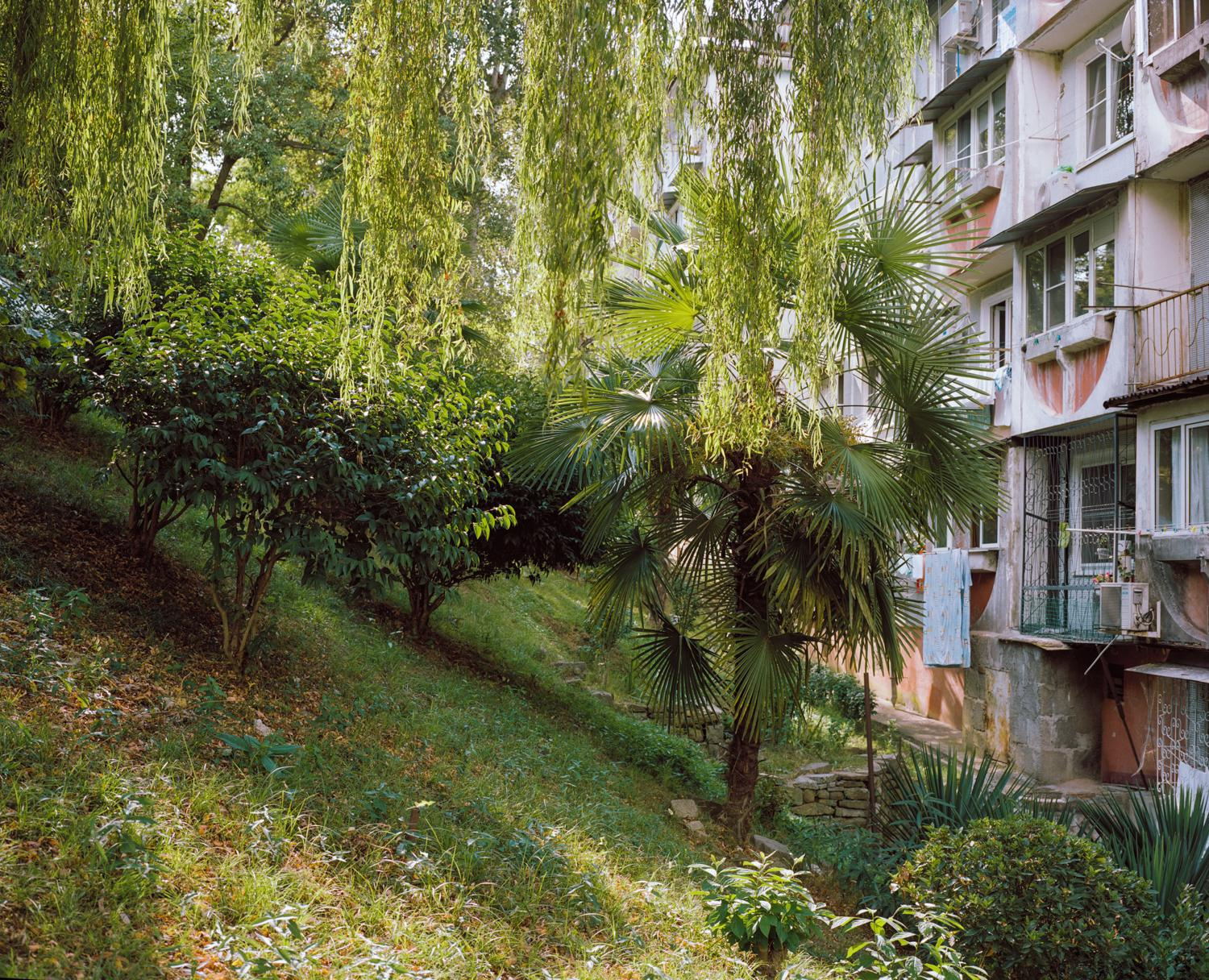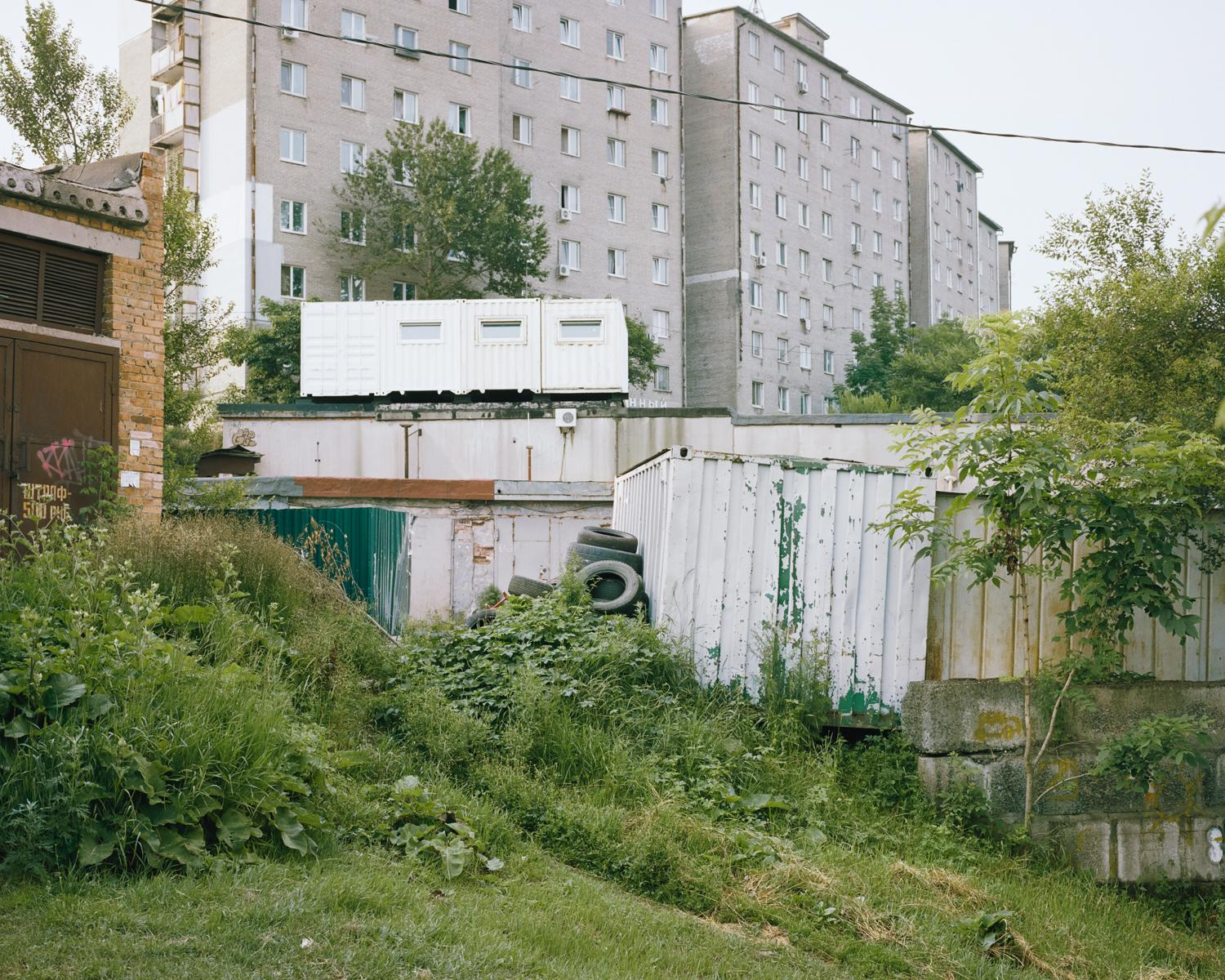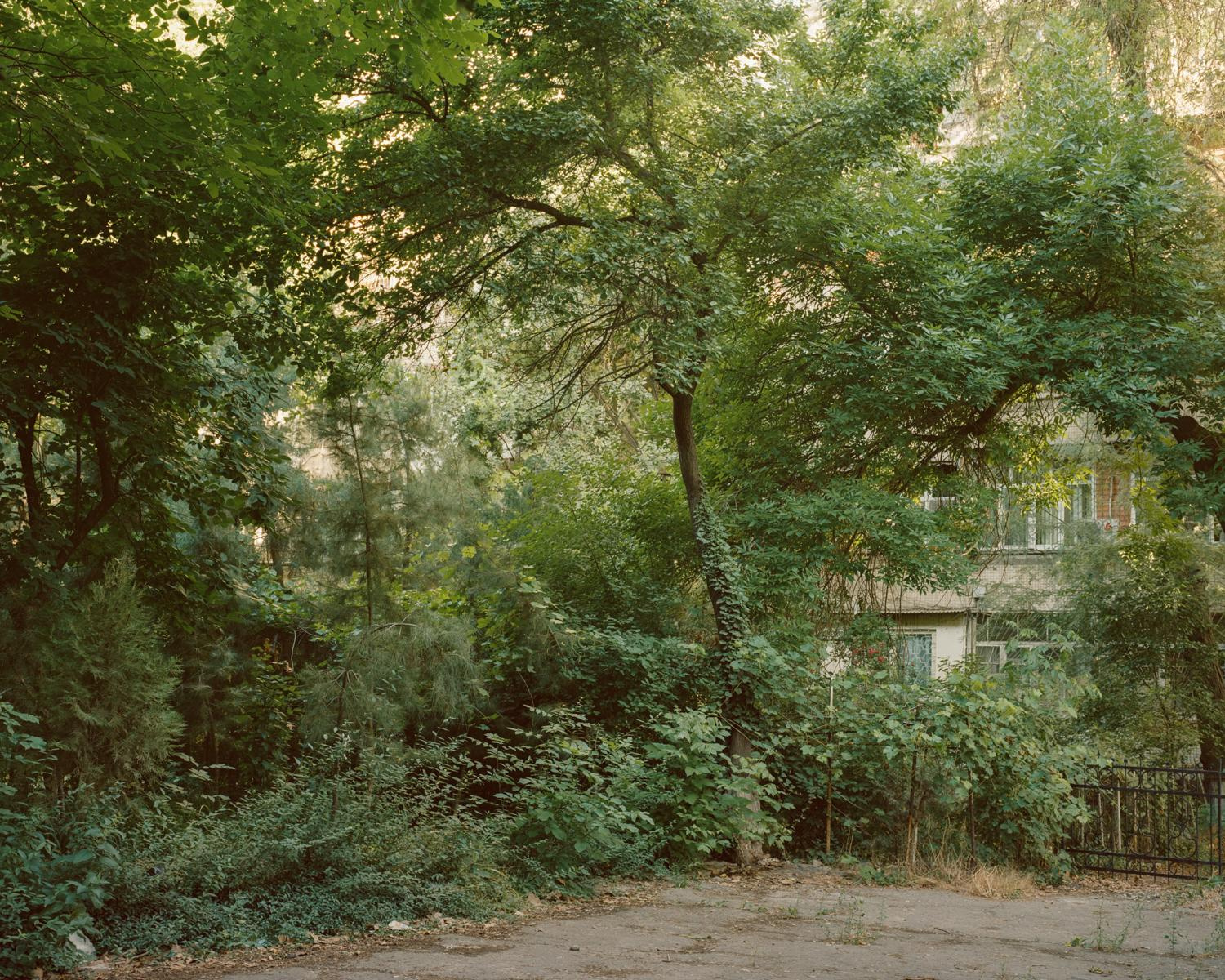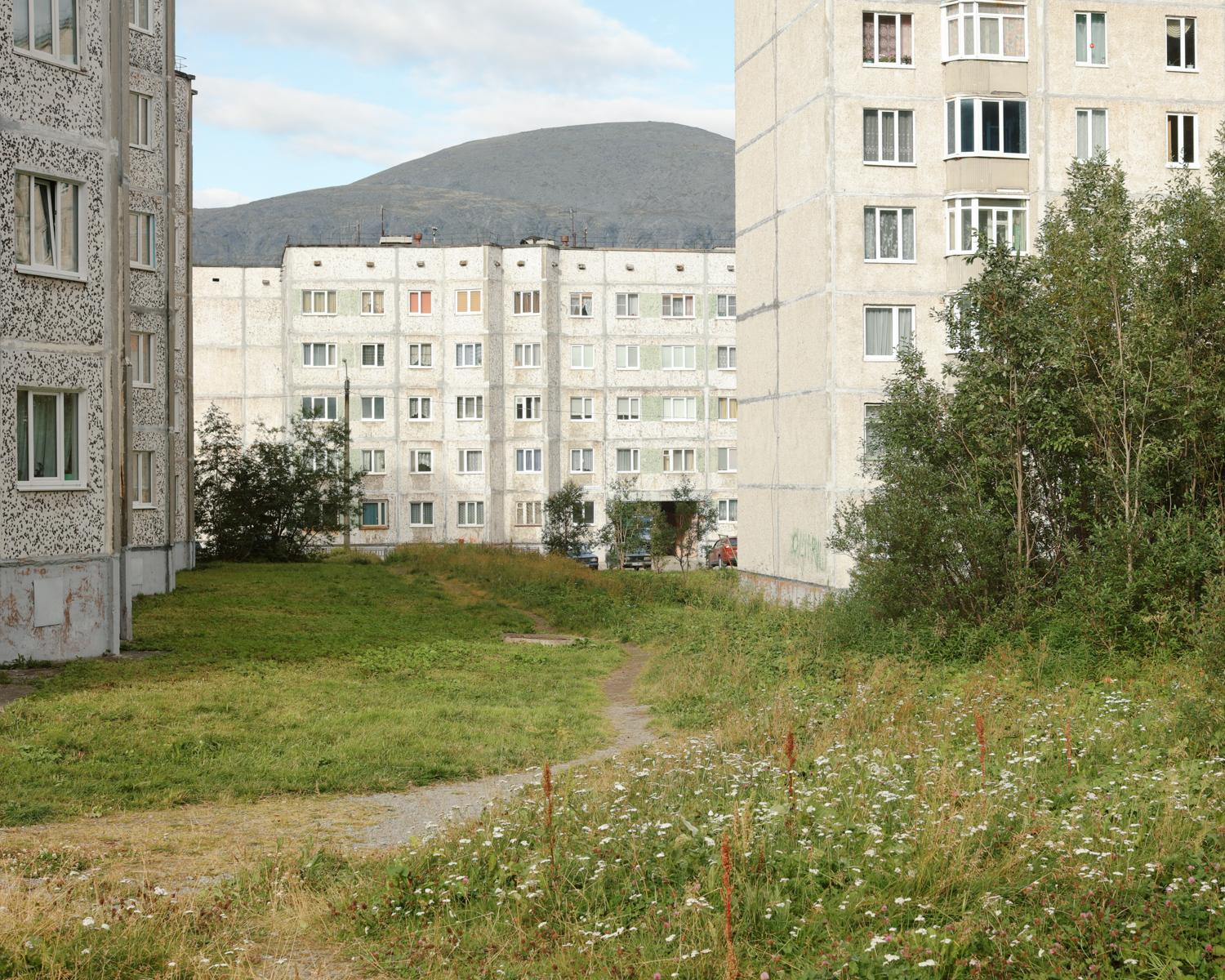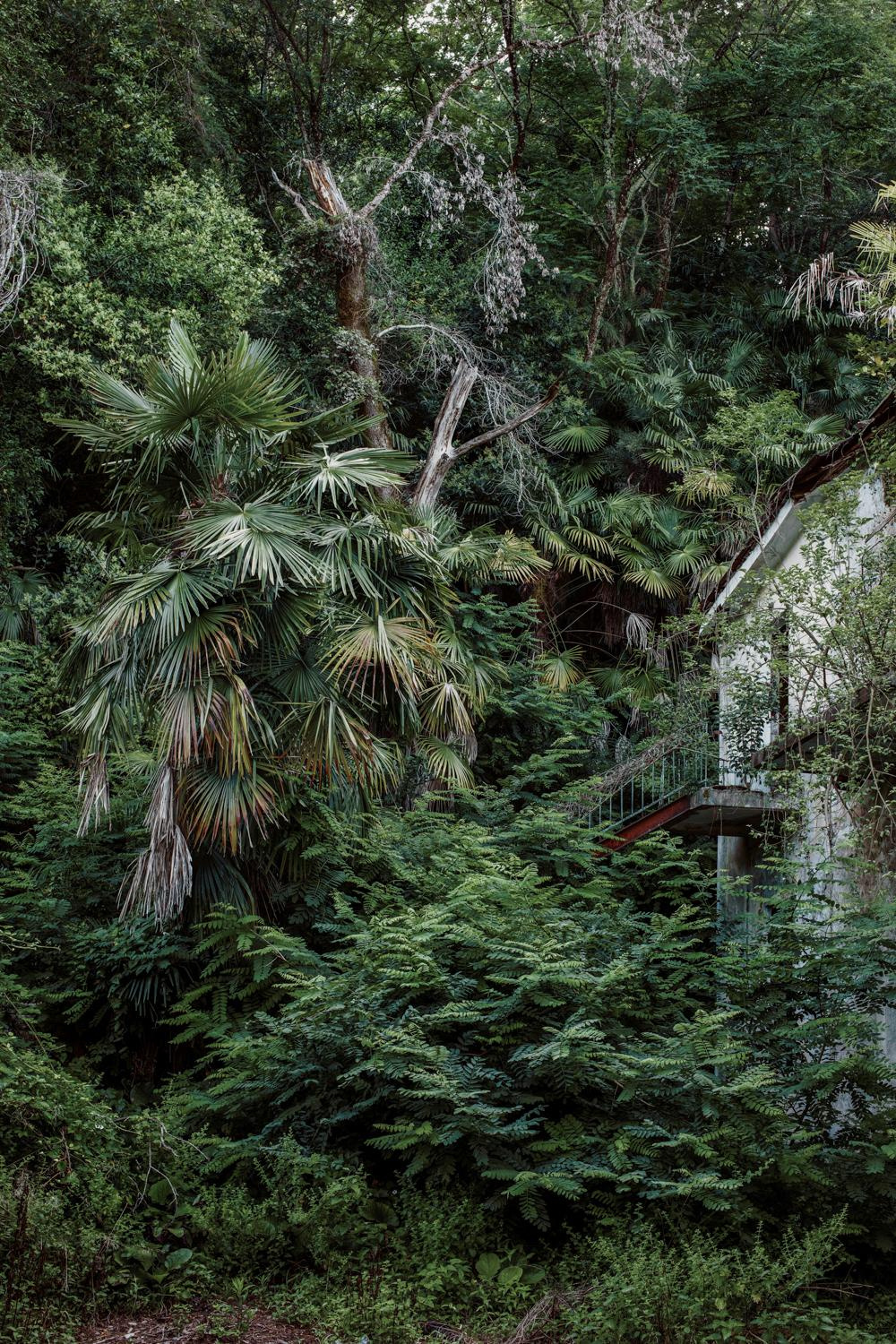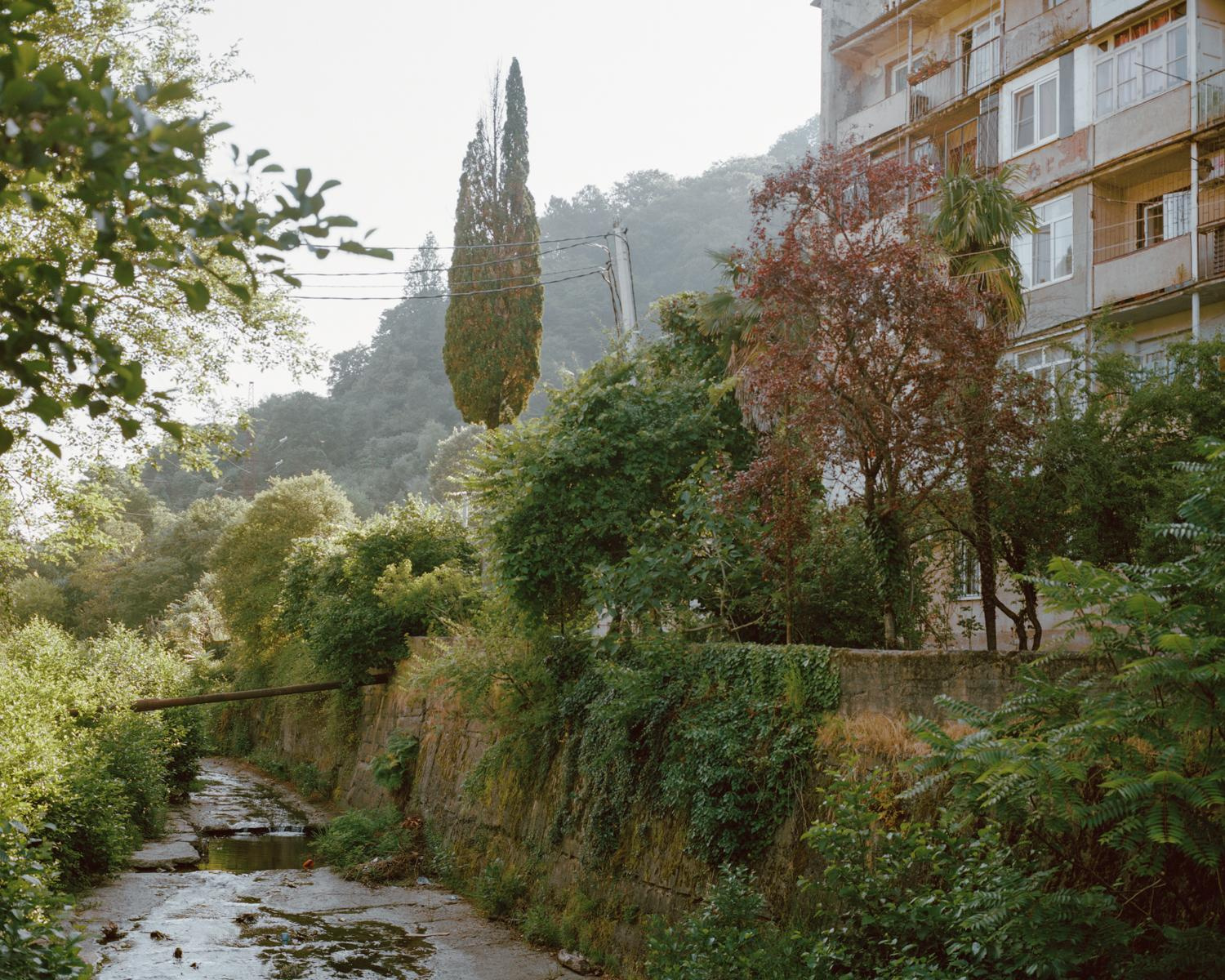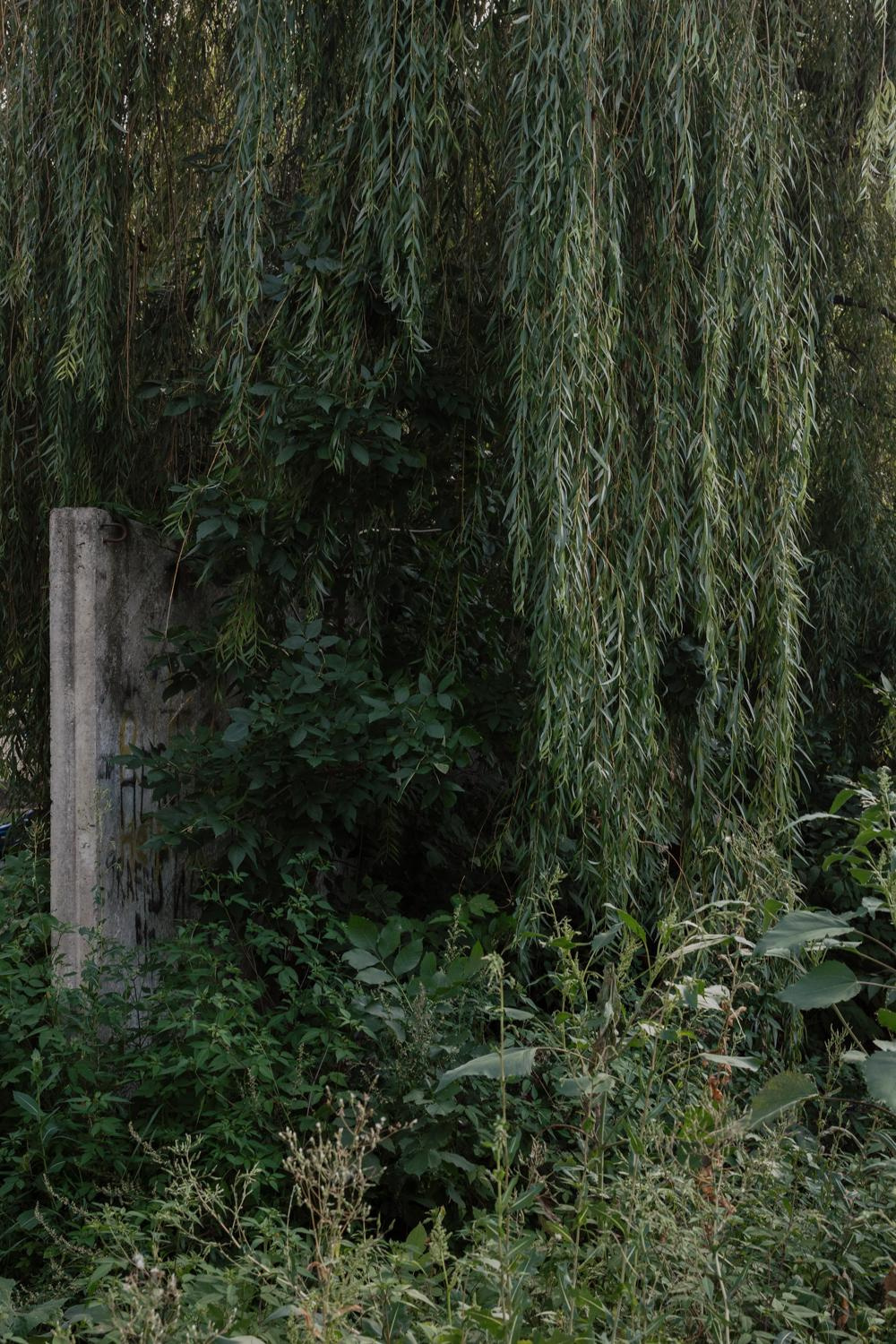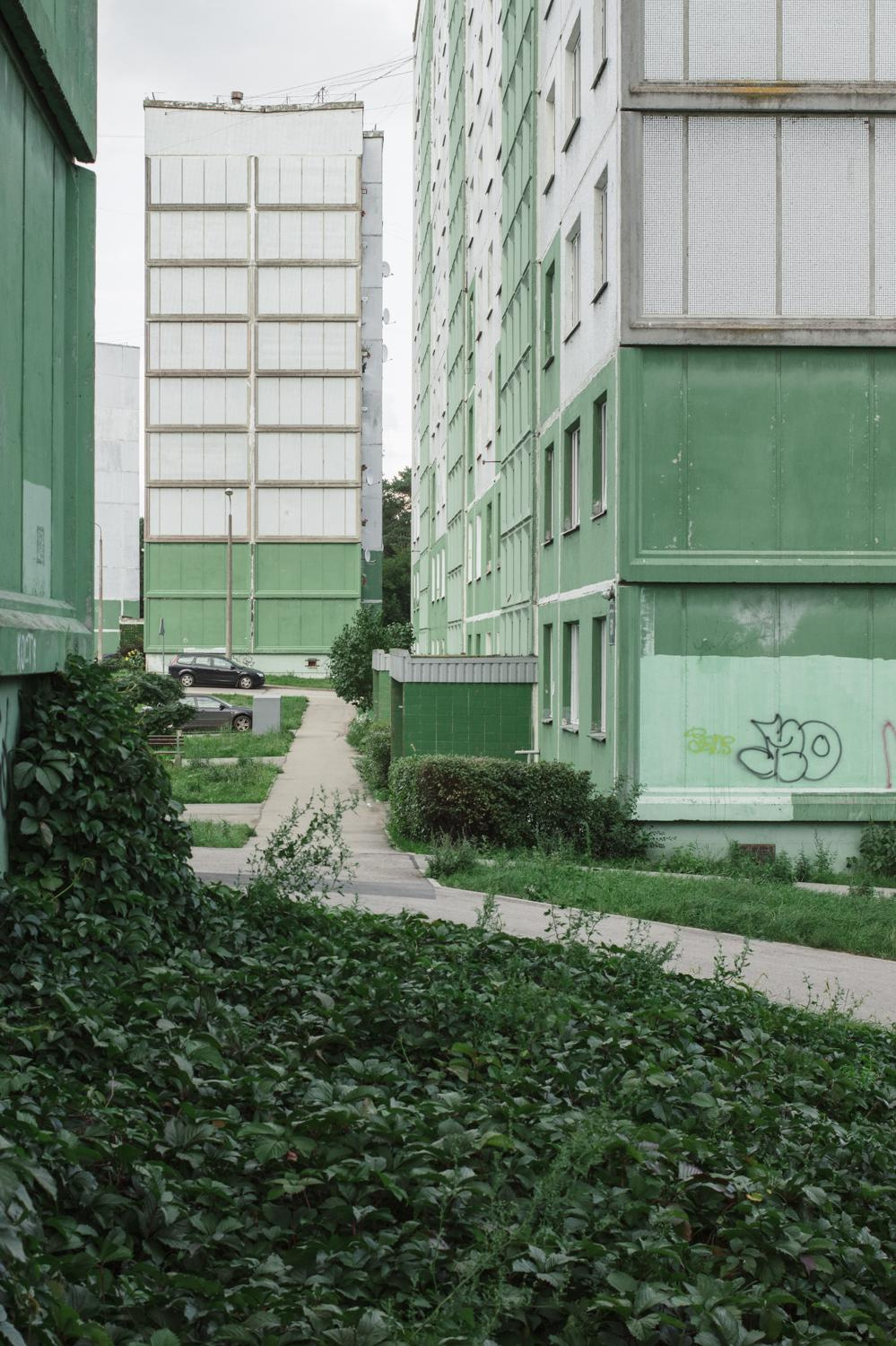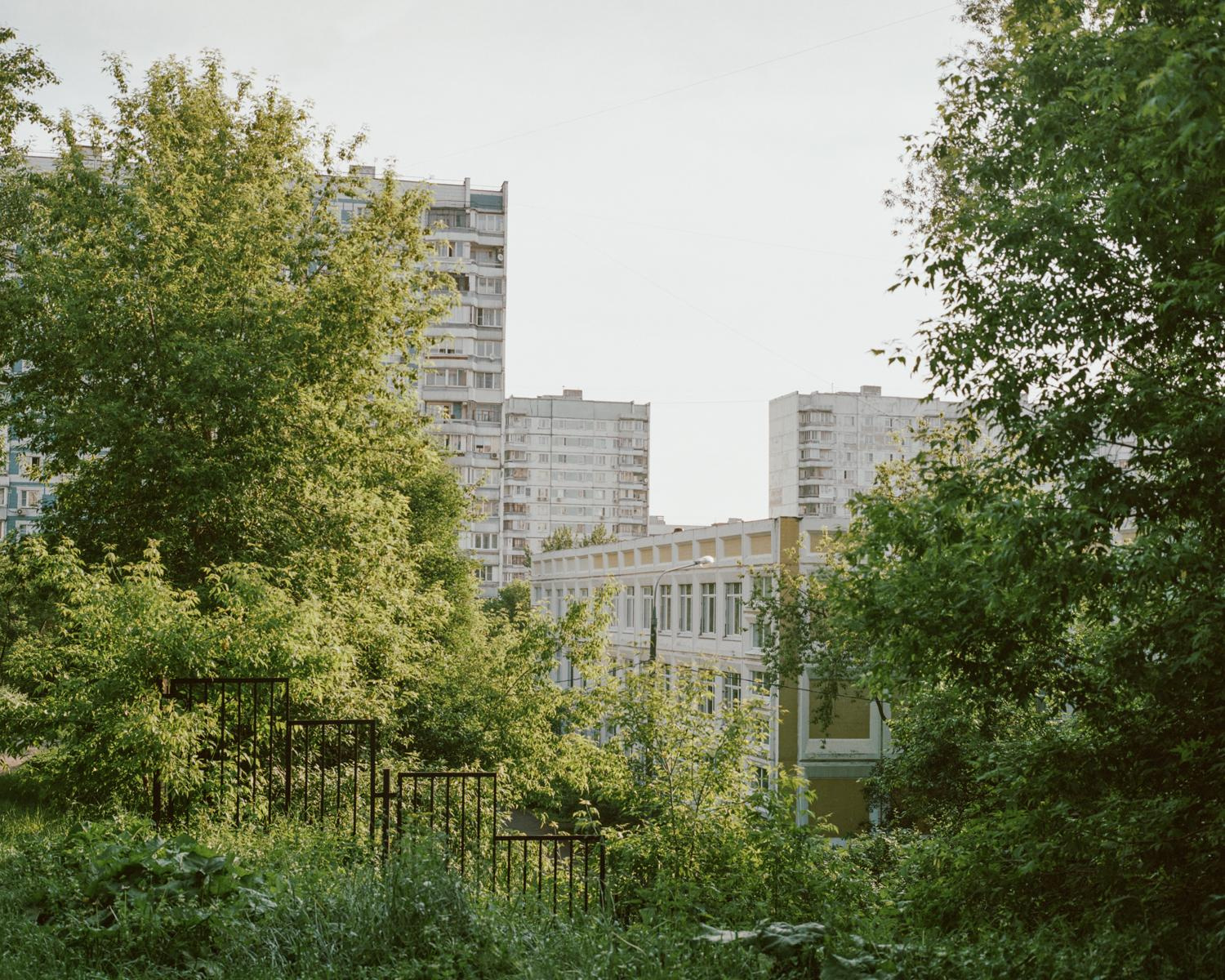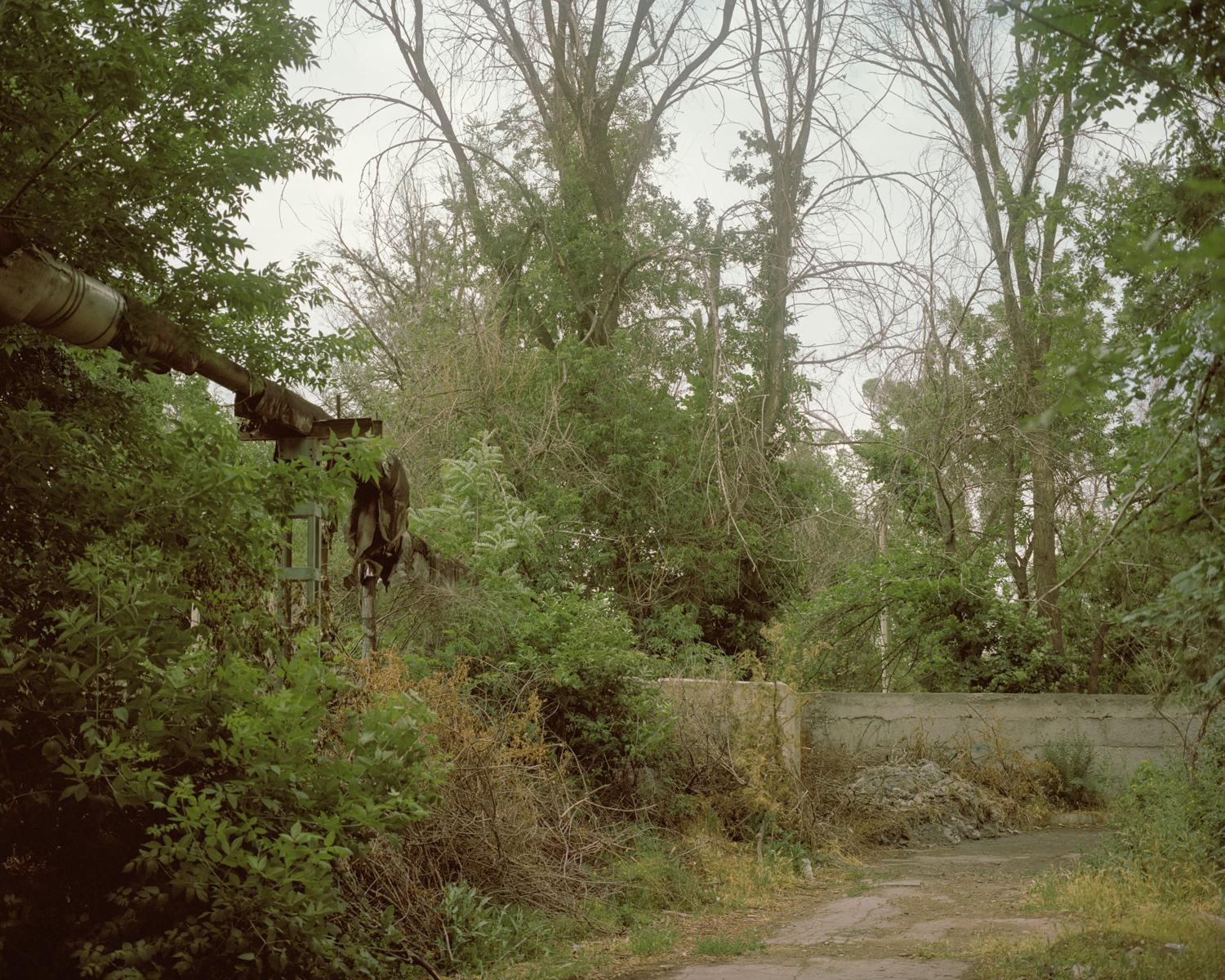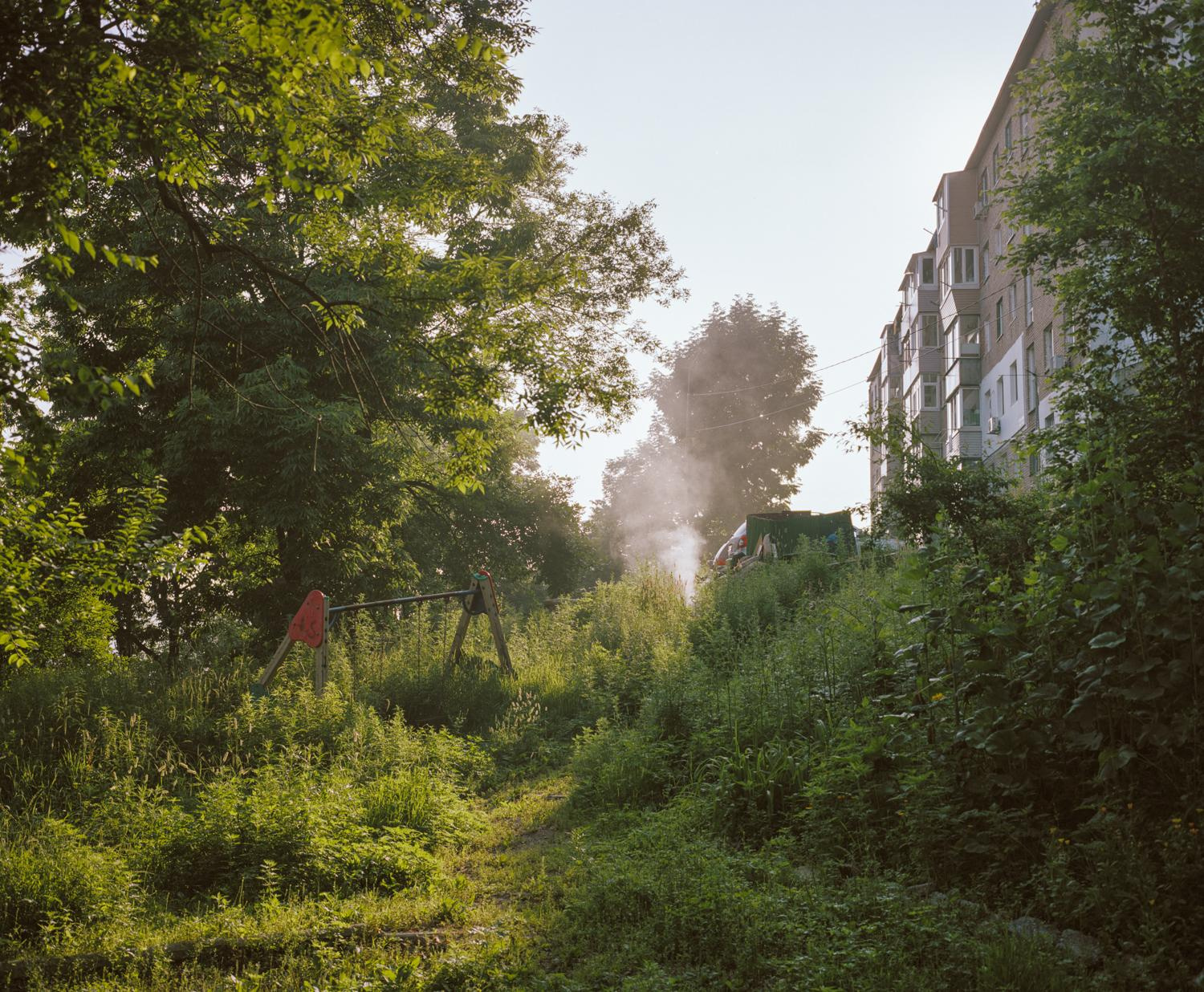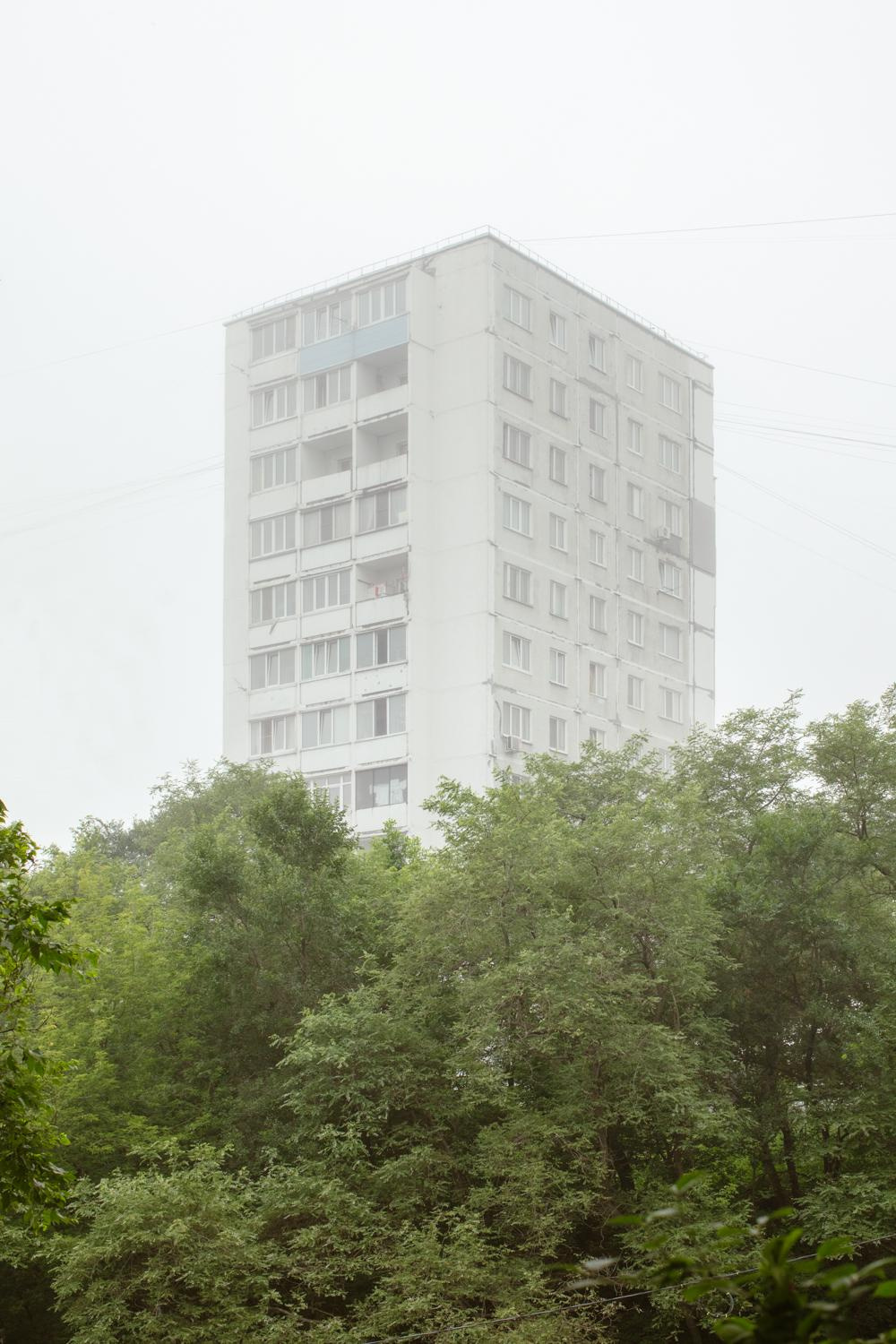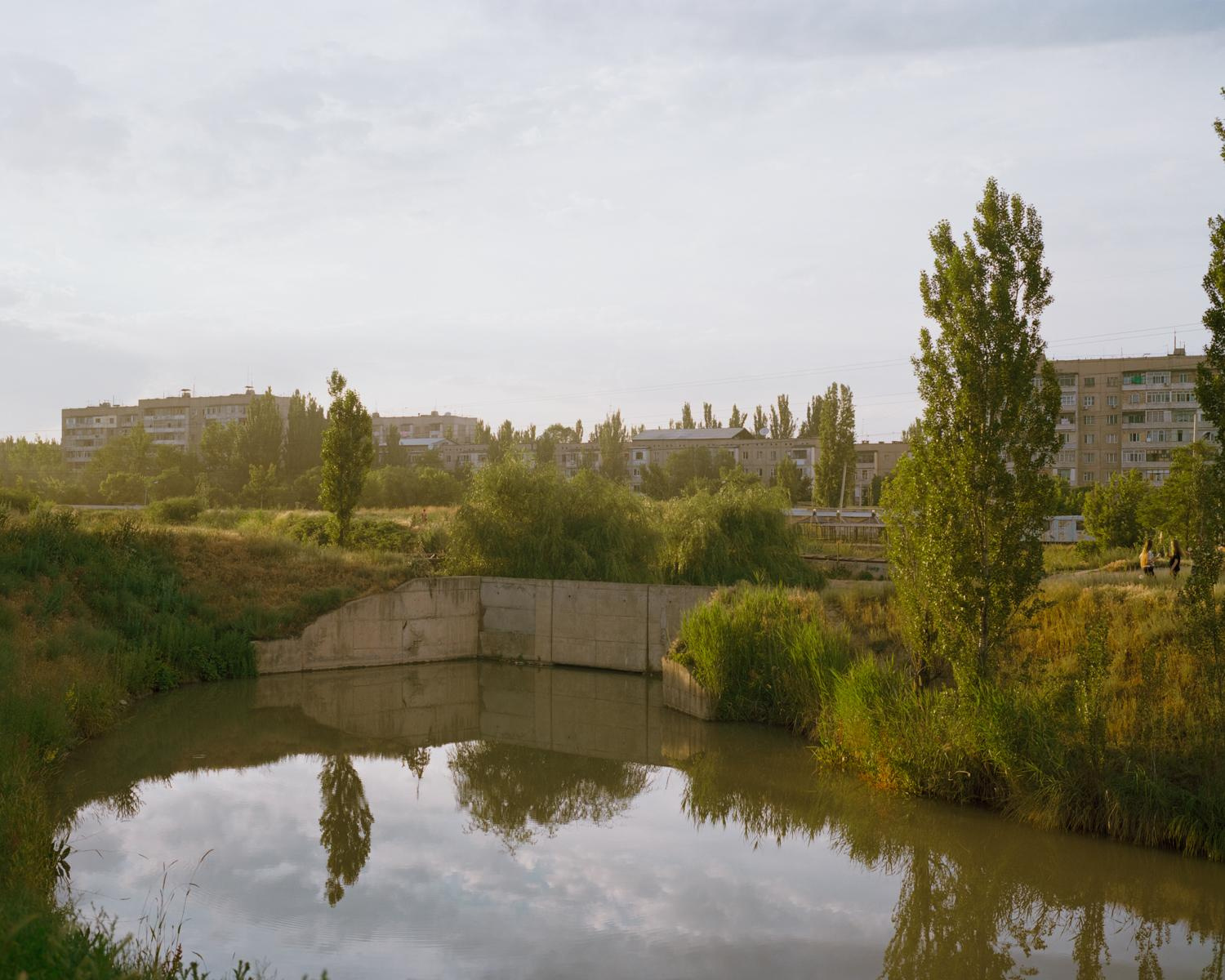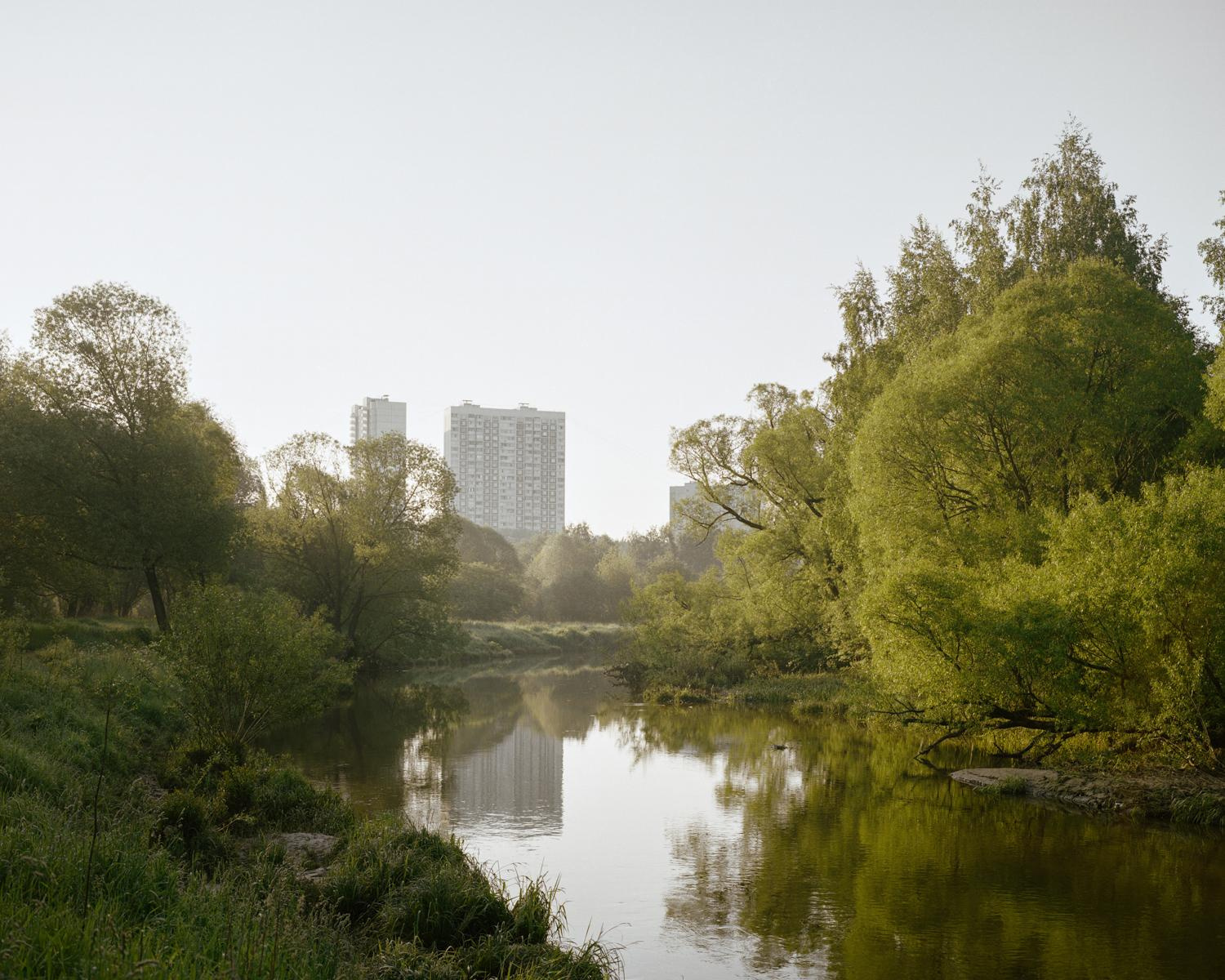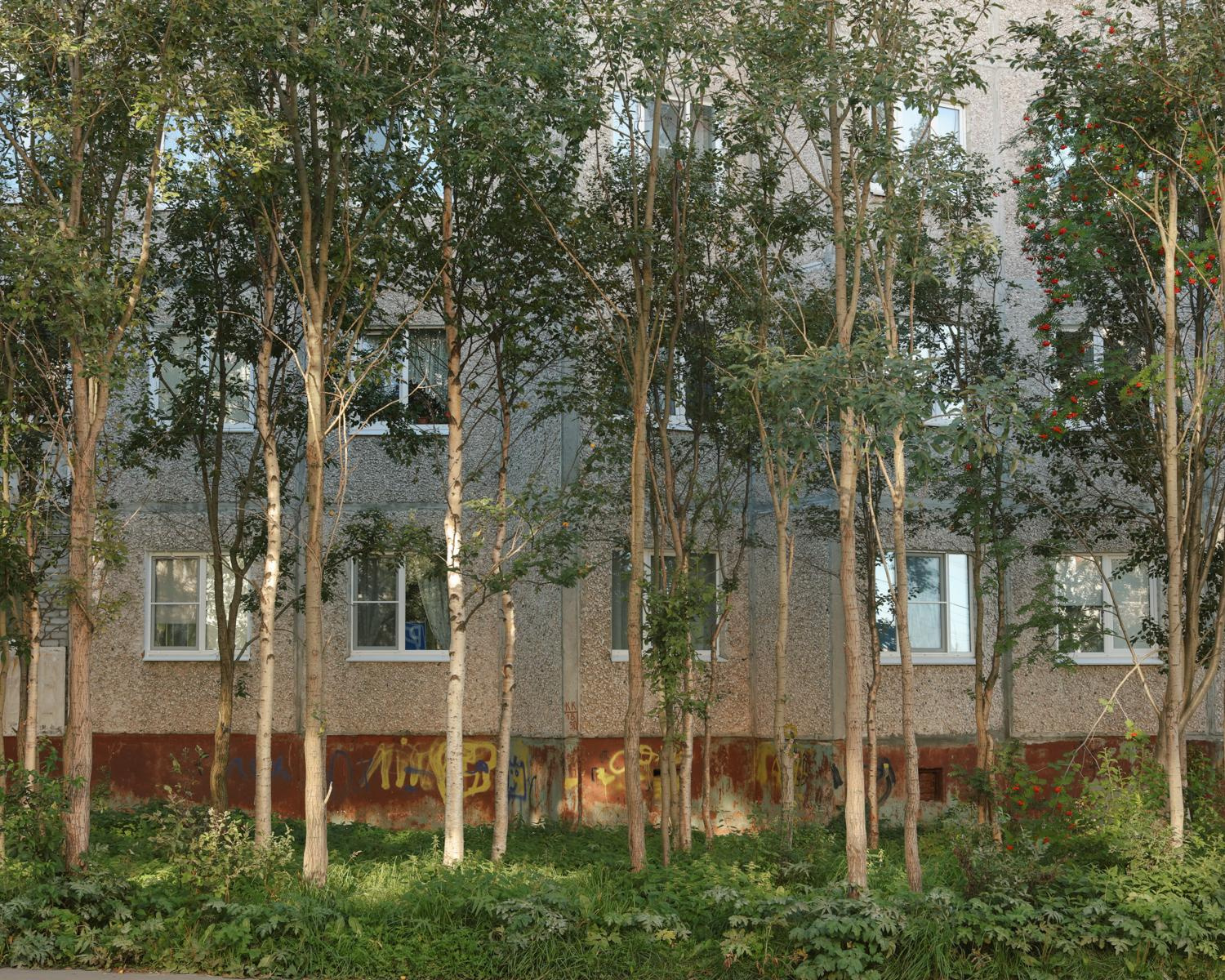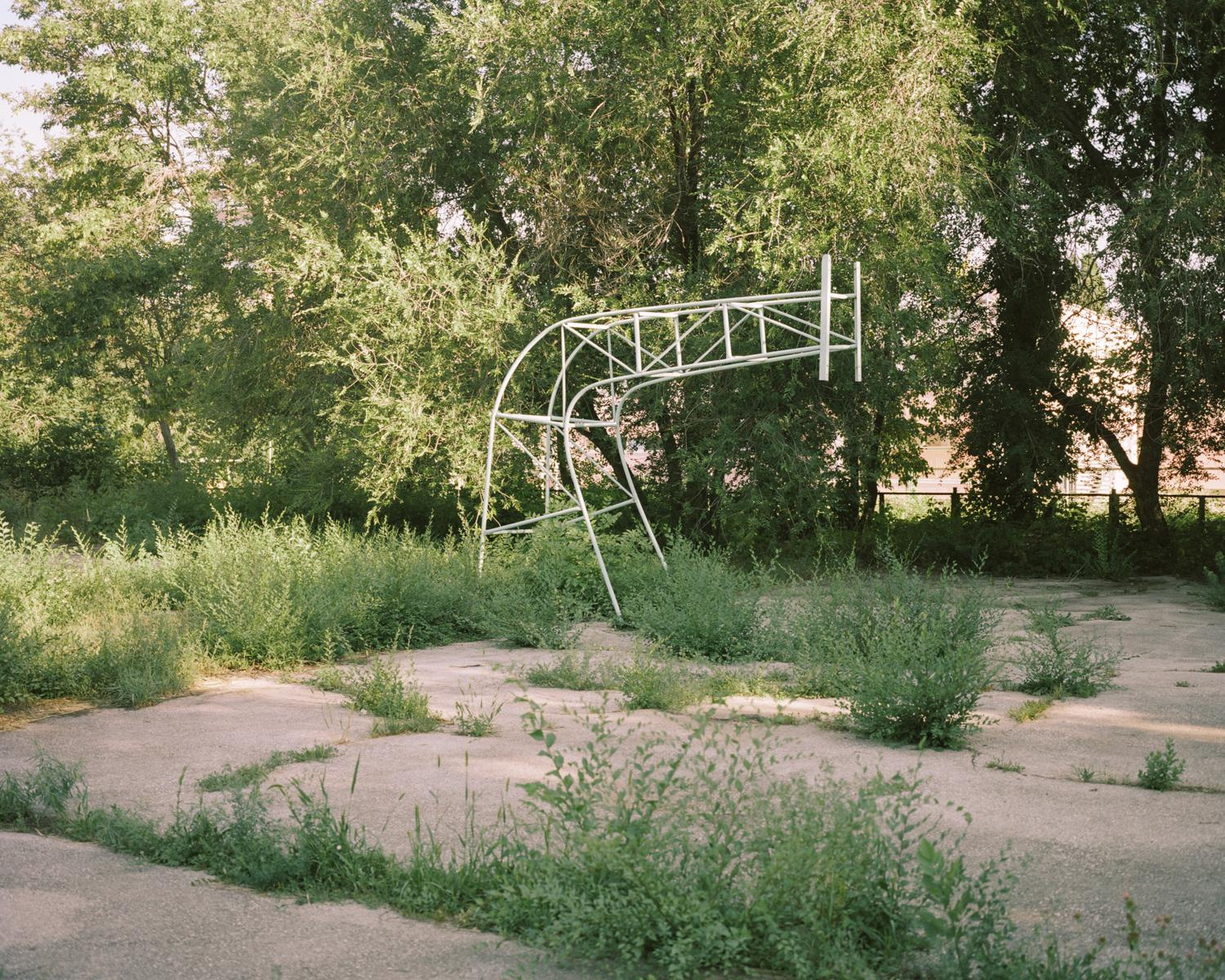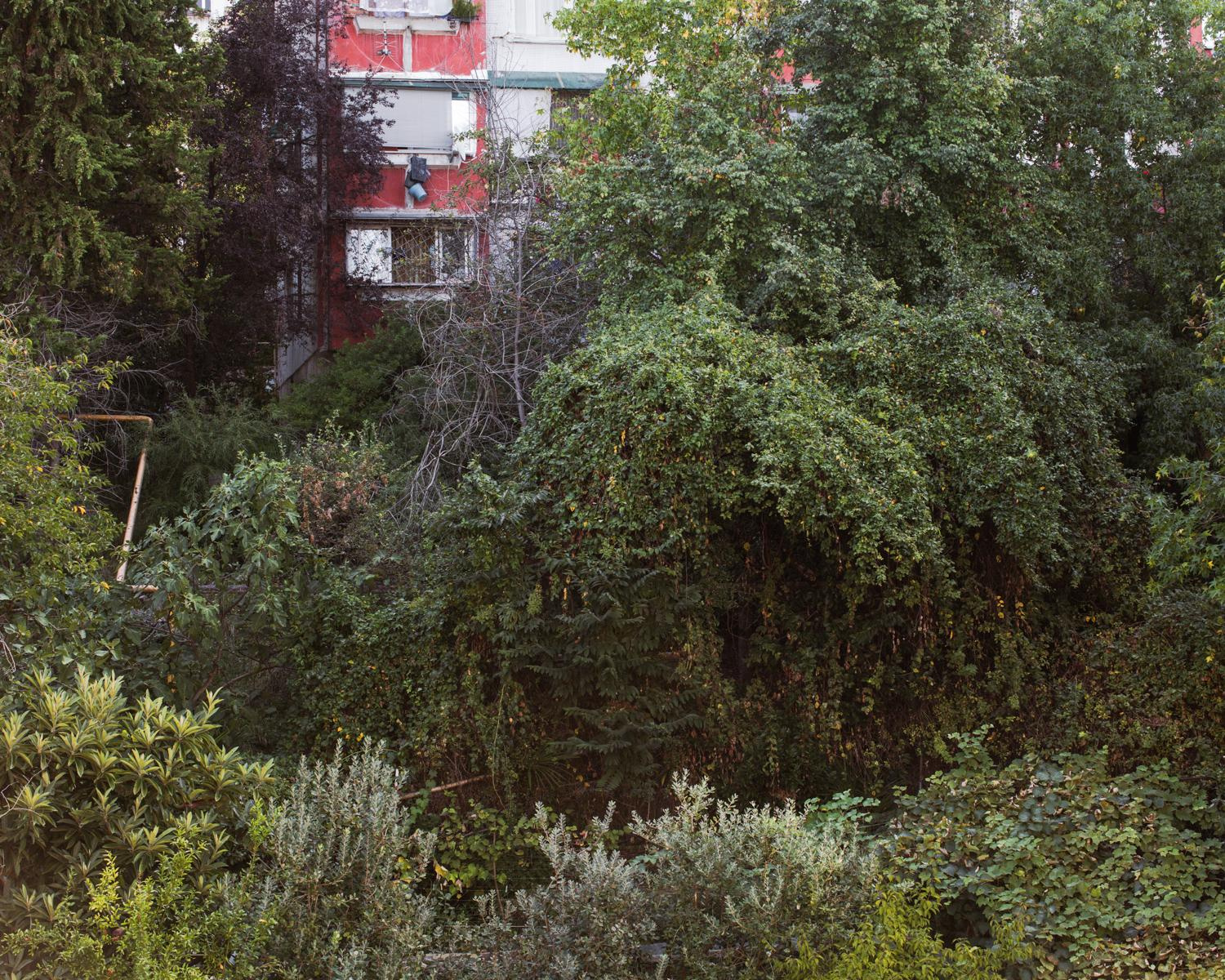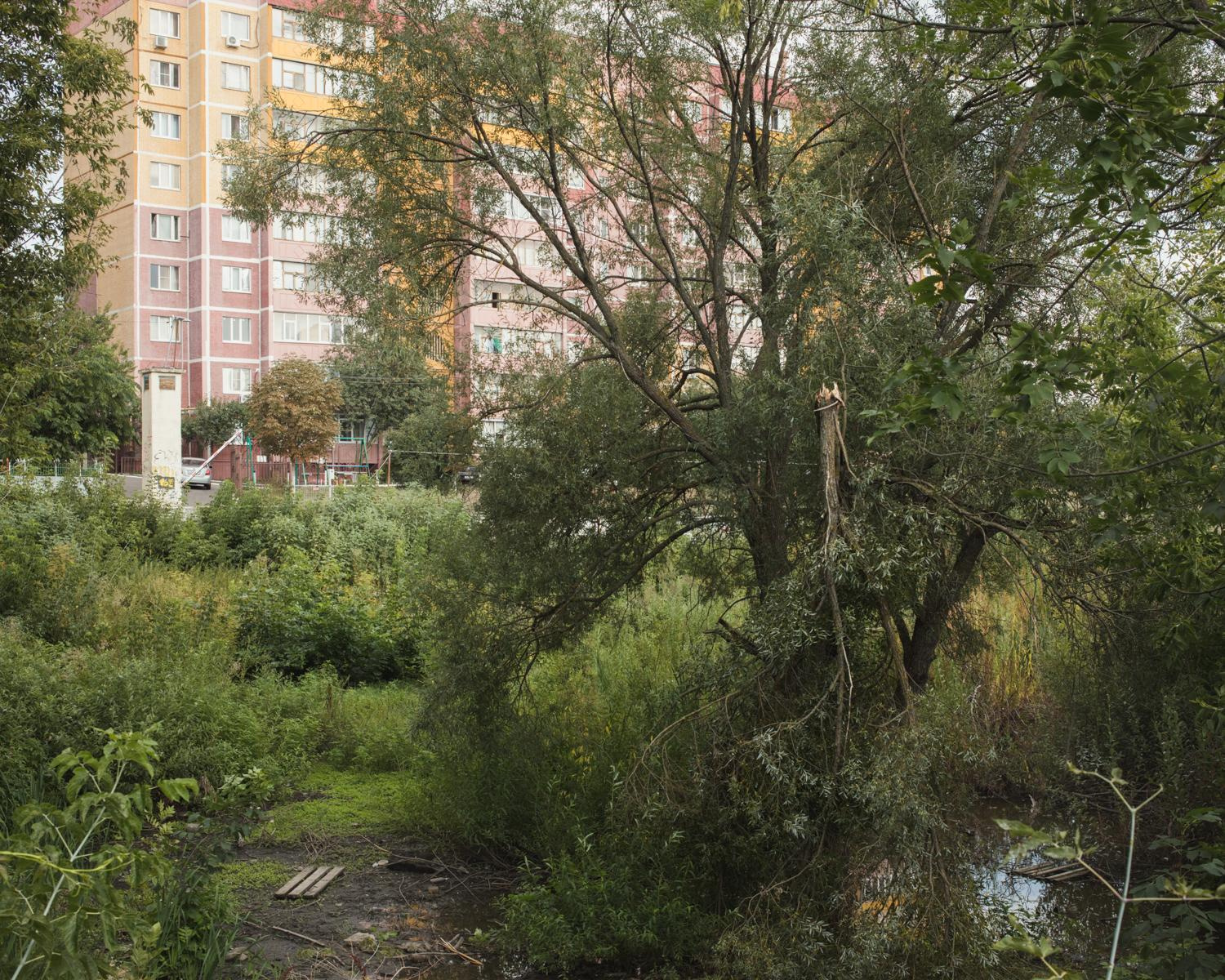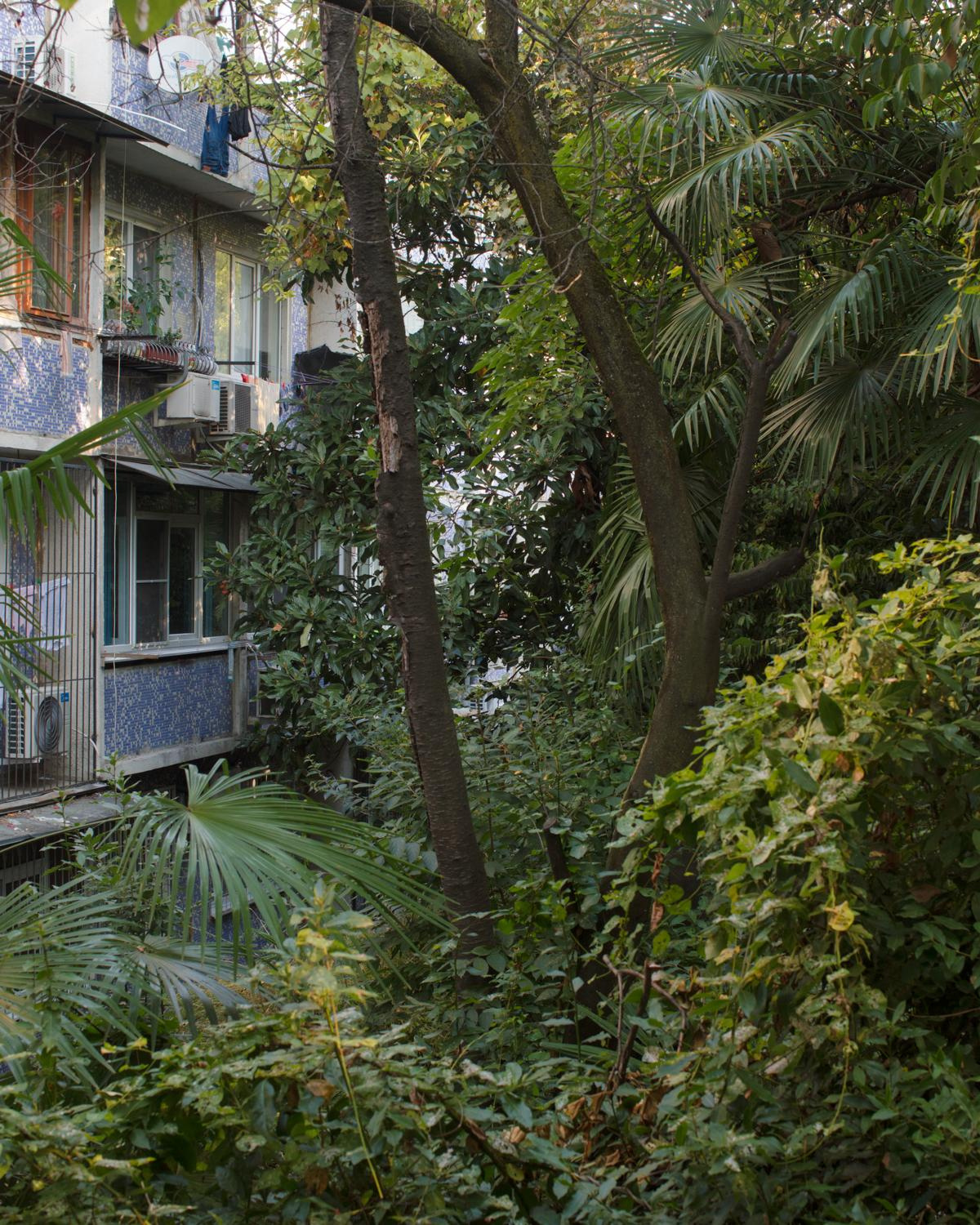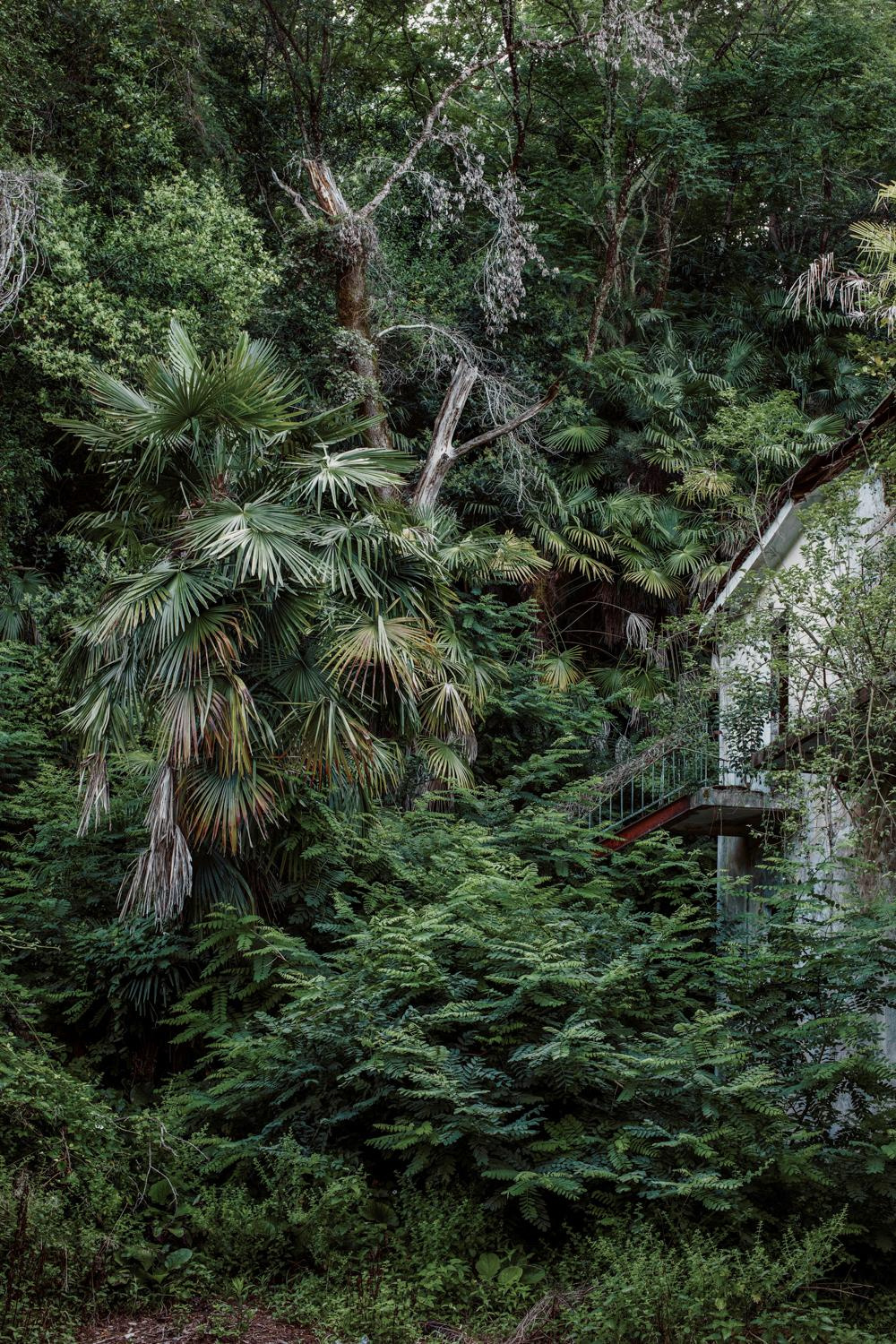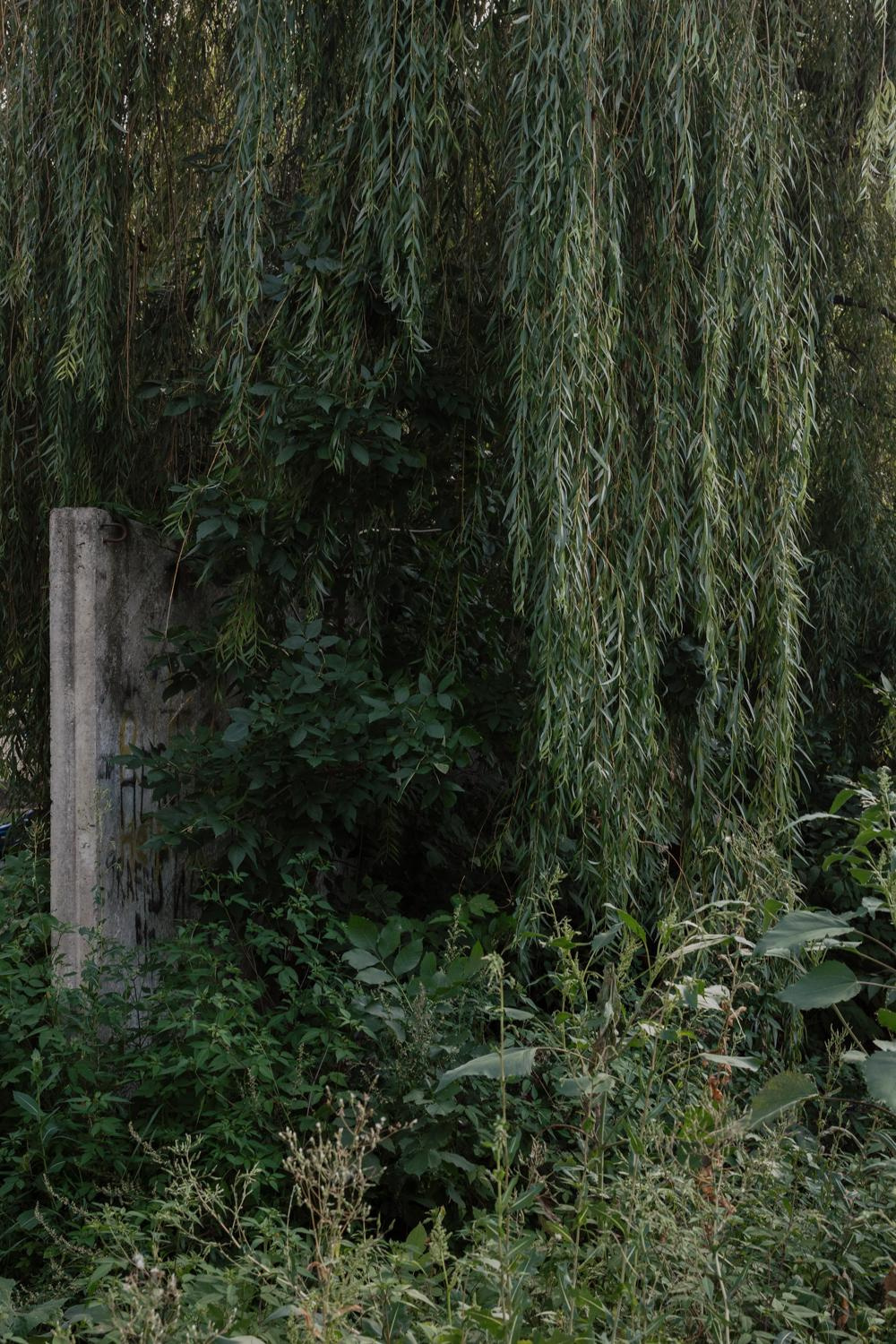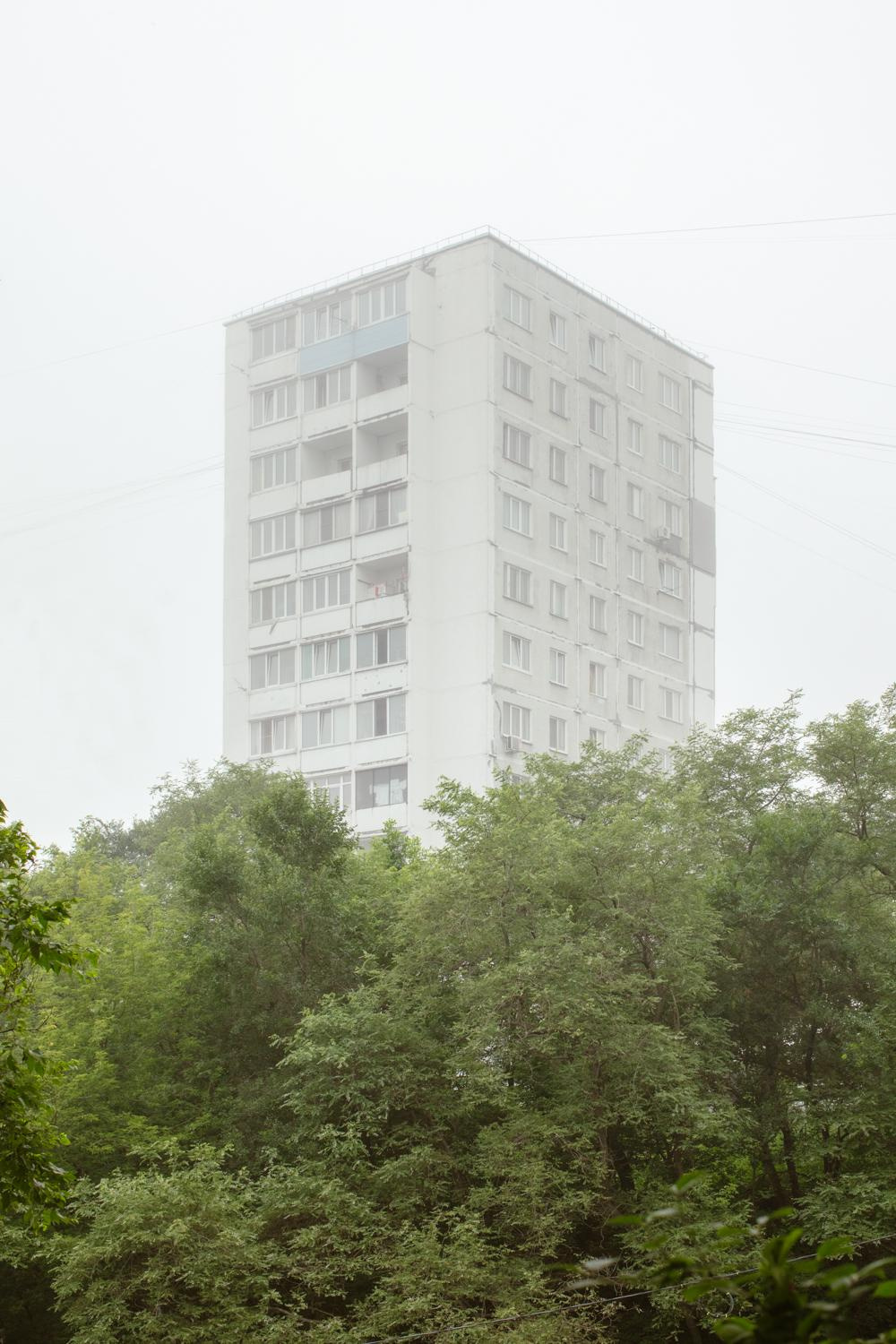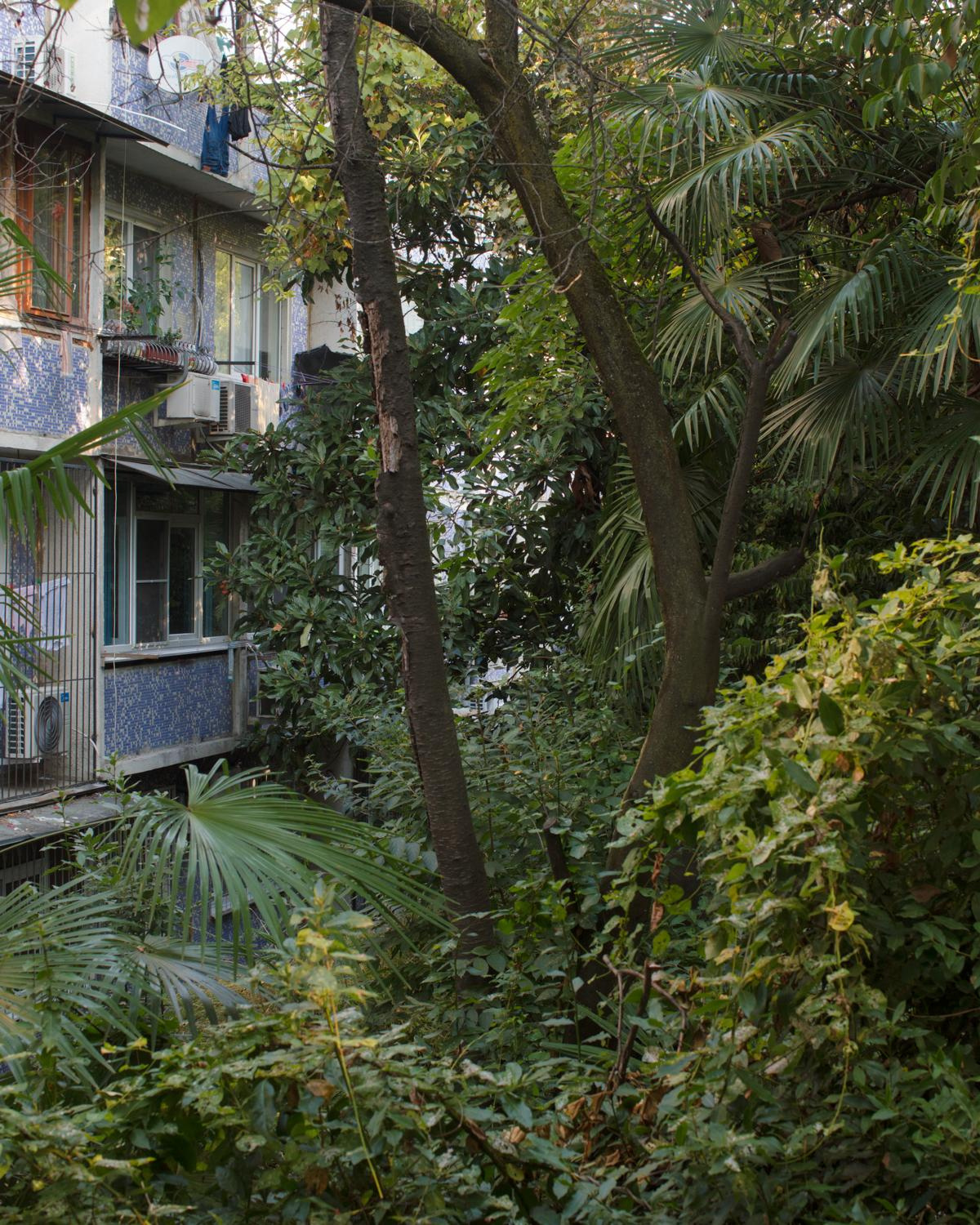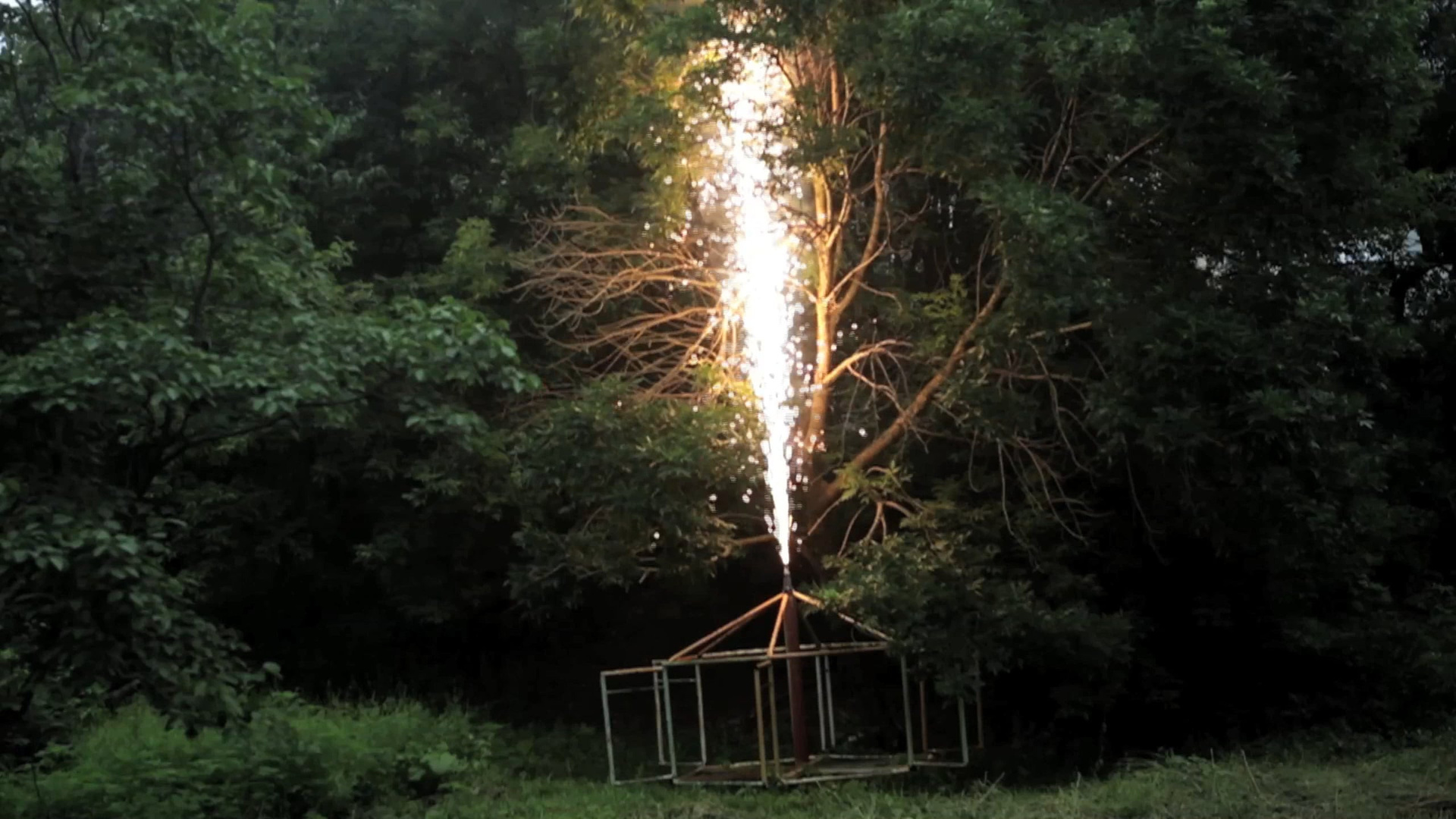The project looks for the pastoral Arcadia in the centrally-planned Soviet modernist neighbourhoods. The Soviet post-war modernism coincided with the global spread of the International Style, except here it lasted from the late 1950s up till 1990s, while planned economy and state-owned land allowed realisation of nation-sized construction programmes.
The uniformly designed residential areas were built from scratch along with all the infrastructure, as well as pre-planned green spaces and parks. Today the urban vegetation of the post-Soviet Arcadia appears to be out of control. The trees outgrow neighbouring buildings, and the tamed palms outgrow their pots. The plants become the result and the illustration of the transformations, while remaining their active participants. Once conceived with the concept of the socialist paradise, the utopian garden city in mind, today these cities re-conquered by plants create the new romantic landscape of the post-Soviet space.
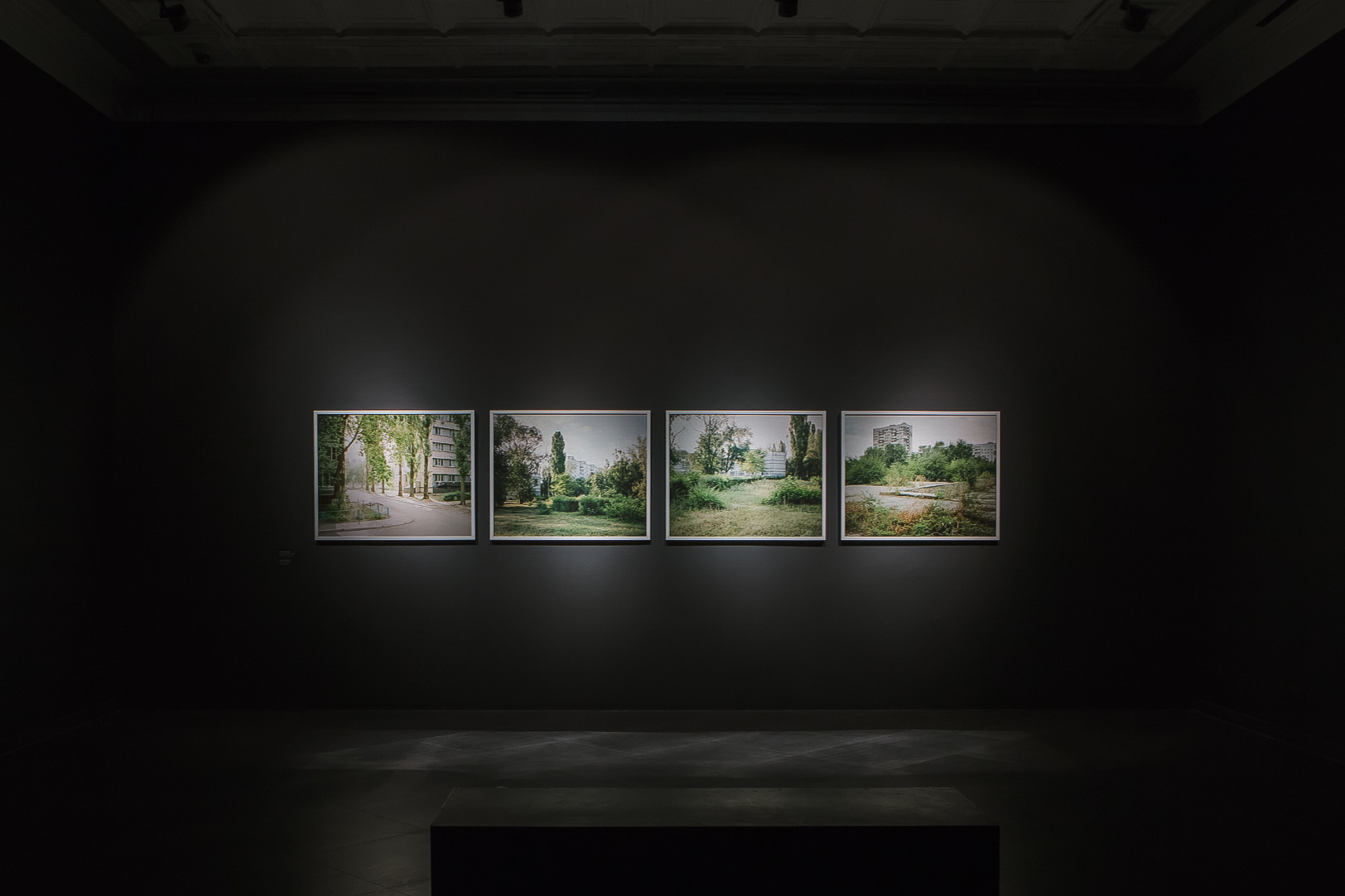
The Soviet Garden City was to turn every «microdistrict» — the new basic element in the Soviet urban planning — into the socialist worker’s paradise. The transitions from the socialist economy to the free market and from the indusrtial to the post-industrial society relieved man from the responsibility to care for the city garden, and the urban vegetation started to reclaim new spaces. The plants, now left to themselves, became the result and the illustration of the transformations following the economic turmoil, while also remaining their active participants. Gradually occupied by plants the microdistricts create the voids of «non-places» where one can feel exempt from the total surveillance and social pressure. The placid landscape of neighbourhoods and cities, equally indistinguishable from one another, becomes filled with vegetation unnoticeably acquiring a feral state. Its endemic composition and configuration, reaction to climate changes, the variety of plants’ natural behaviour make the uniform spaces once again unique. Similarly to my other projects, Arcadia aims at exploring the collective experience formed by social conditions and nature.
The photographs were made in Tolyatti, Vladivostok,
Moscow, Saint Petersburg, Minsk (Belarus), Tashkent
(Uzbekistan), Bishkek, and Osh (Kyrgyzstan).
The project includes digital pigment prints and a single-channel
video.
